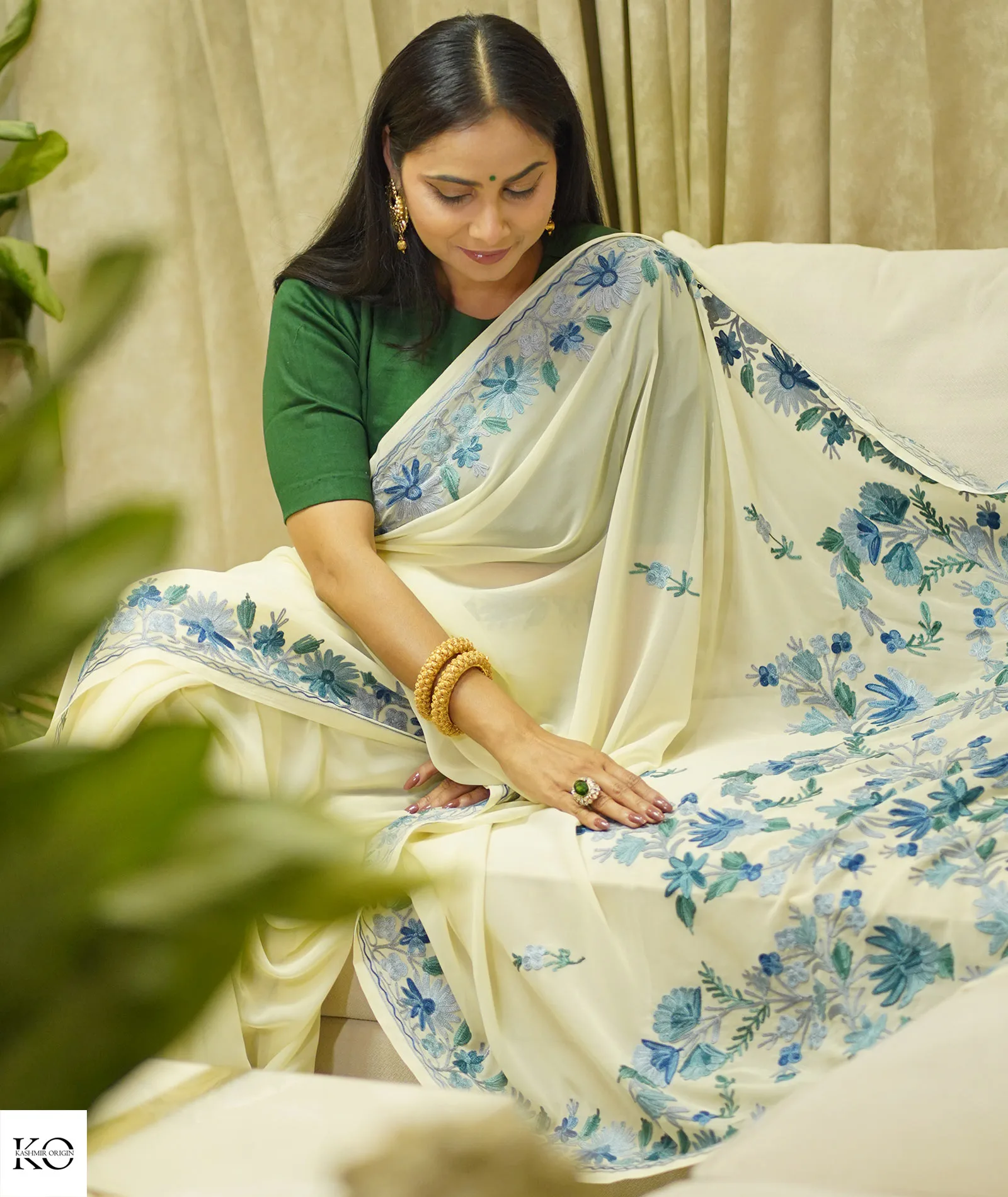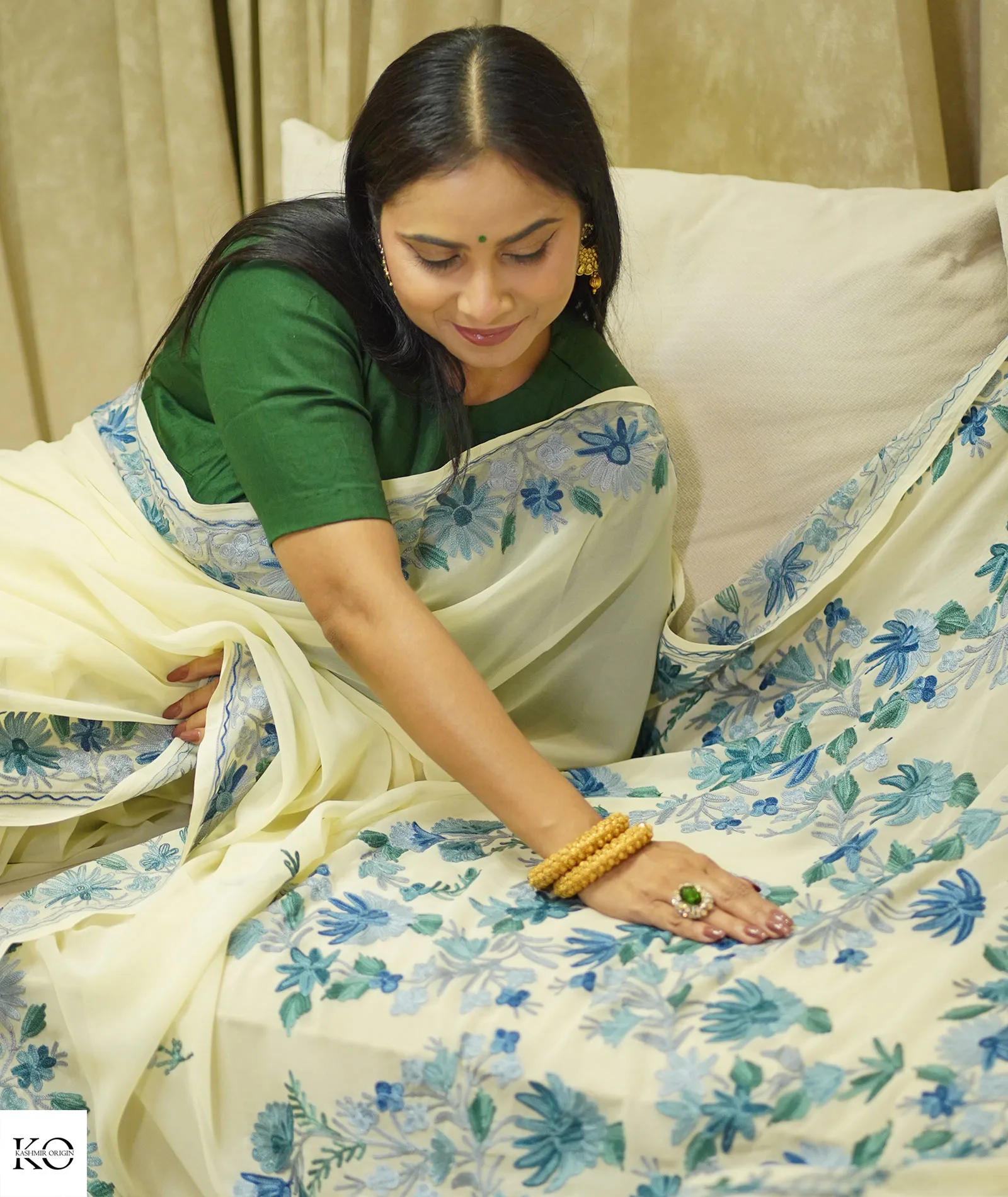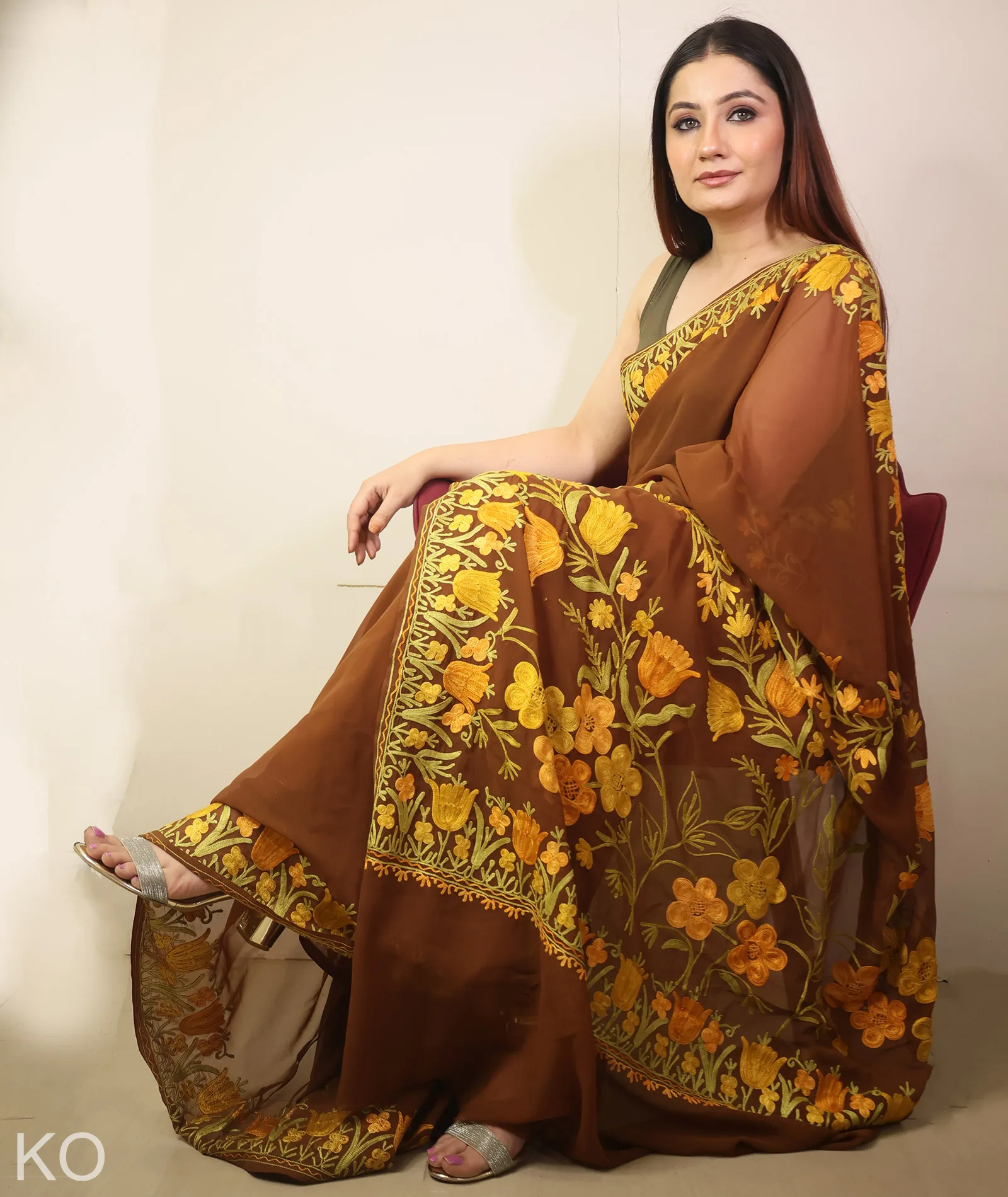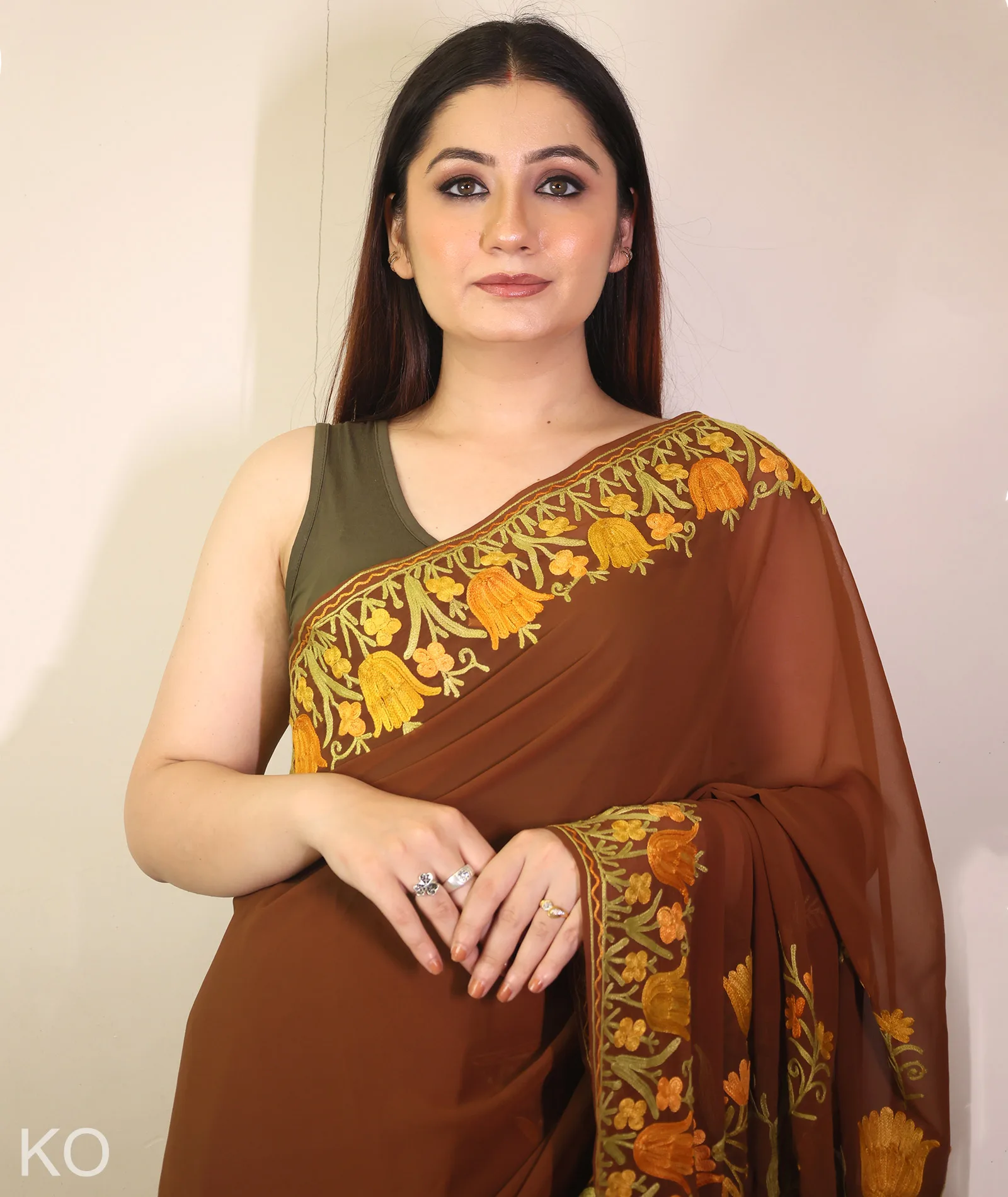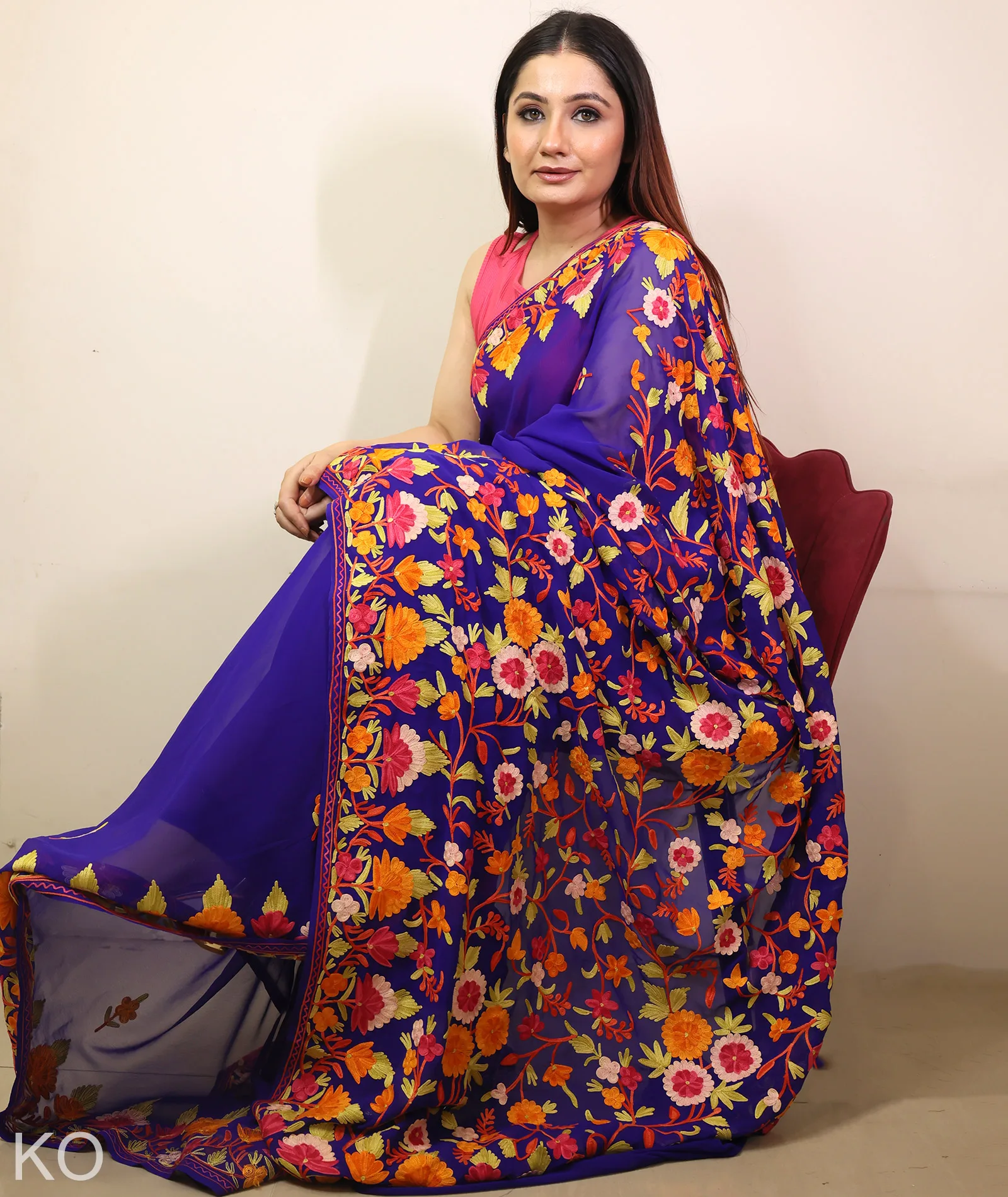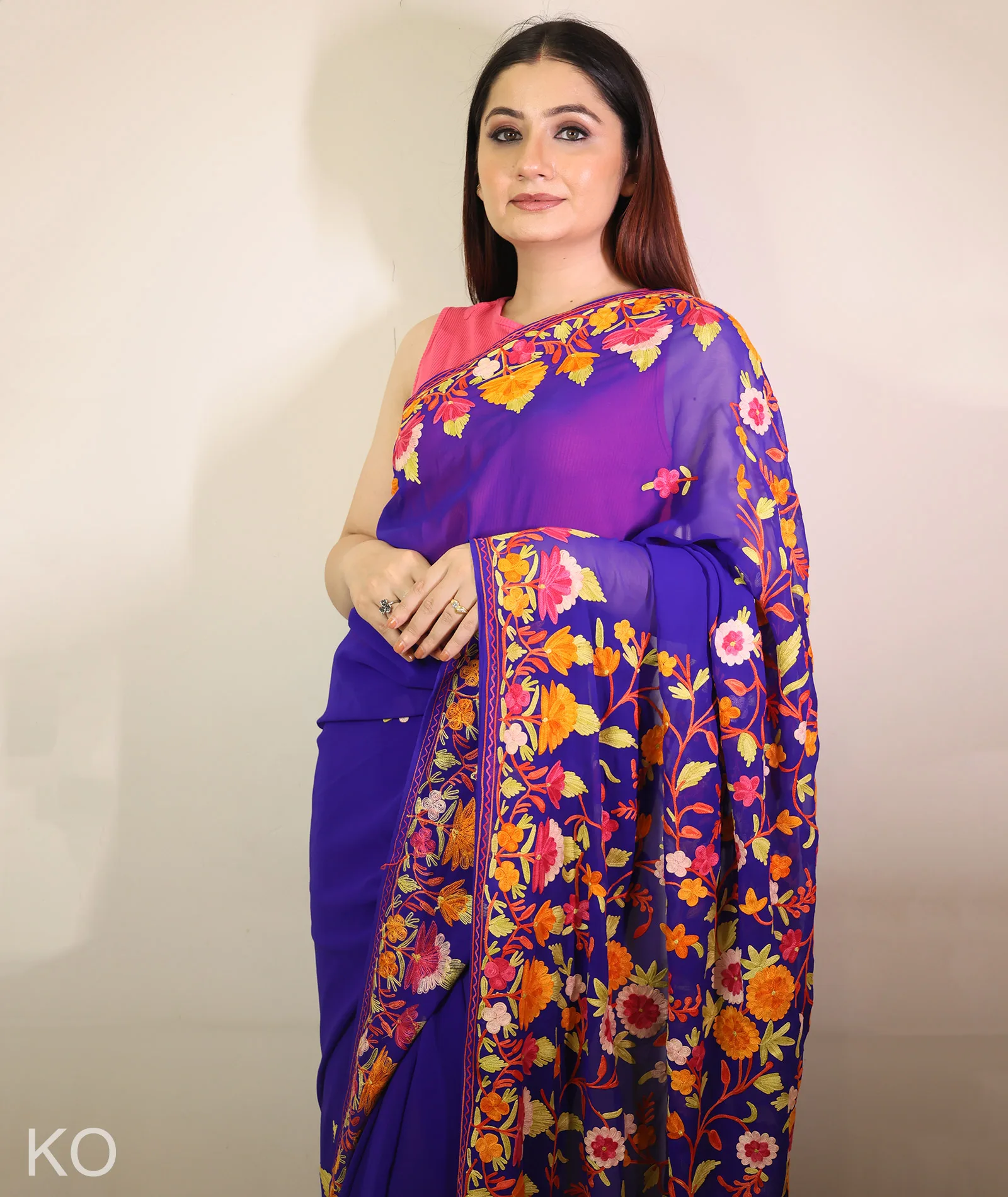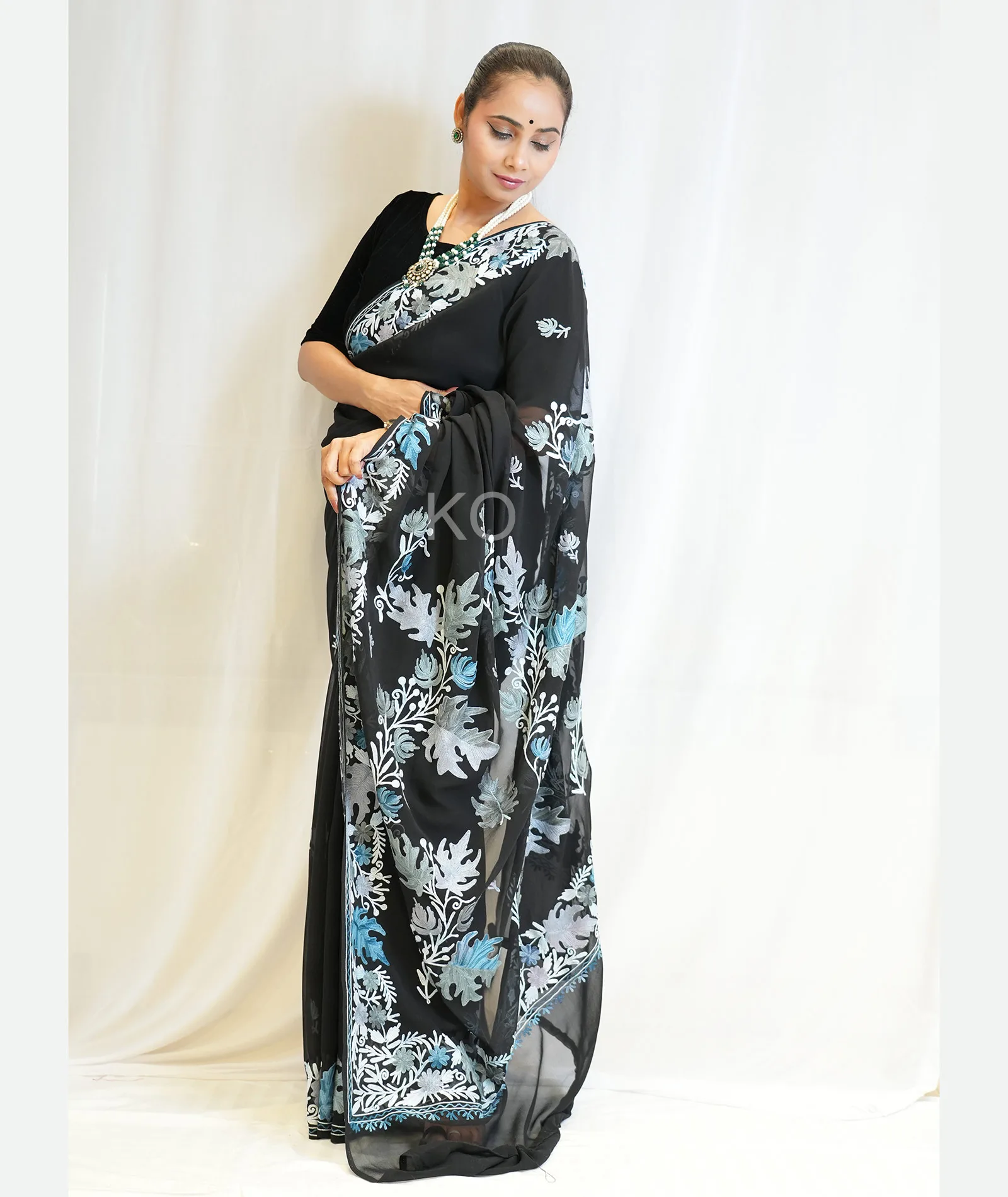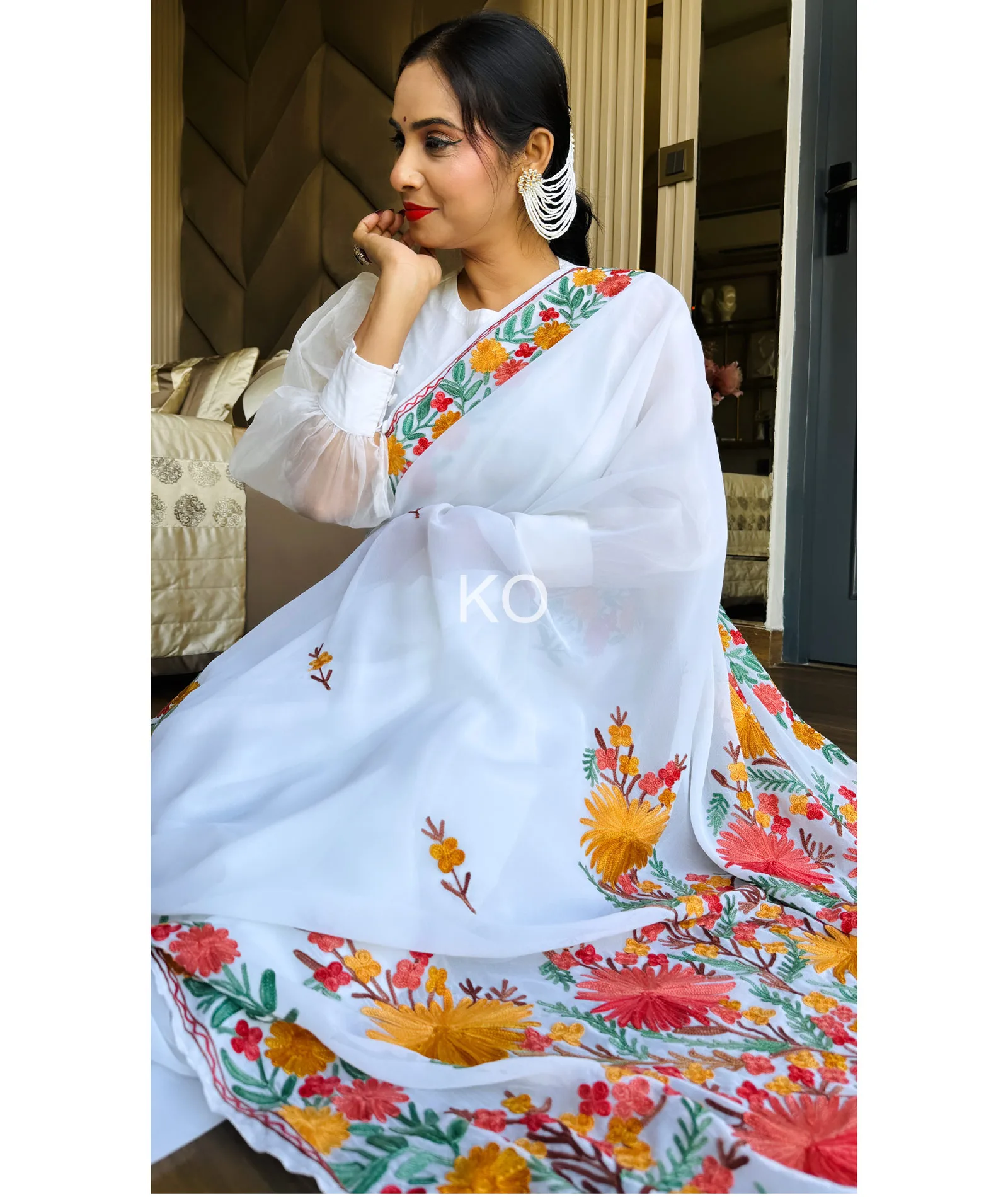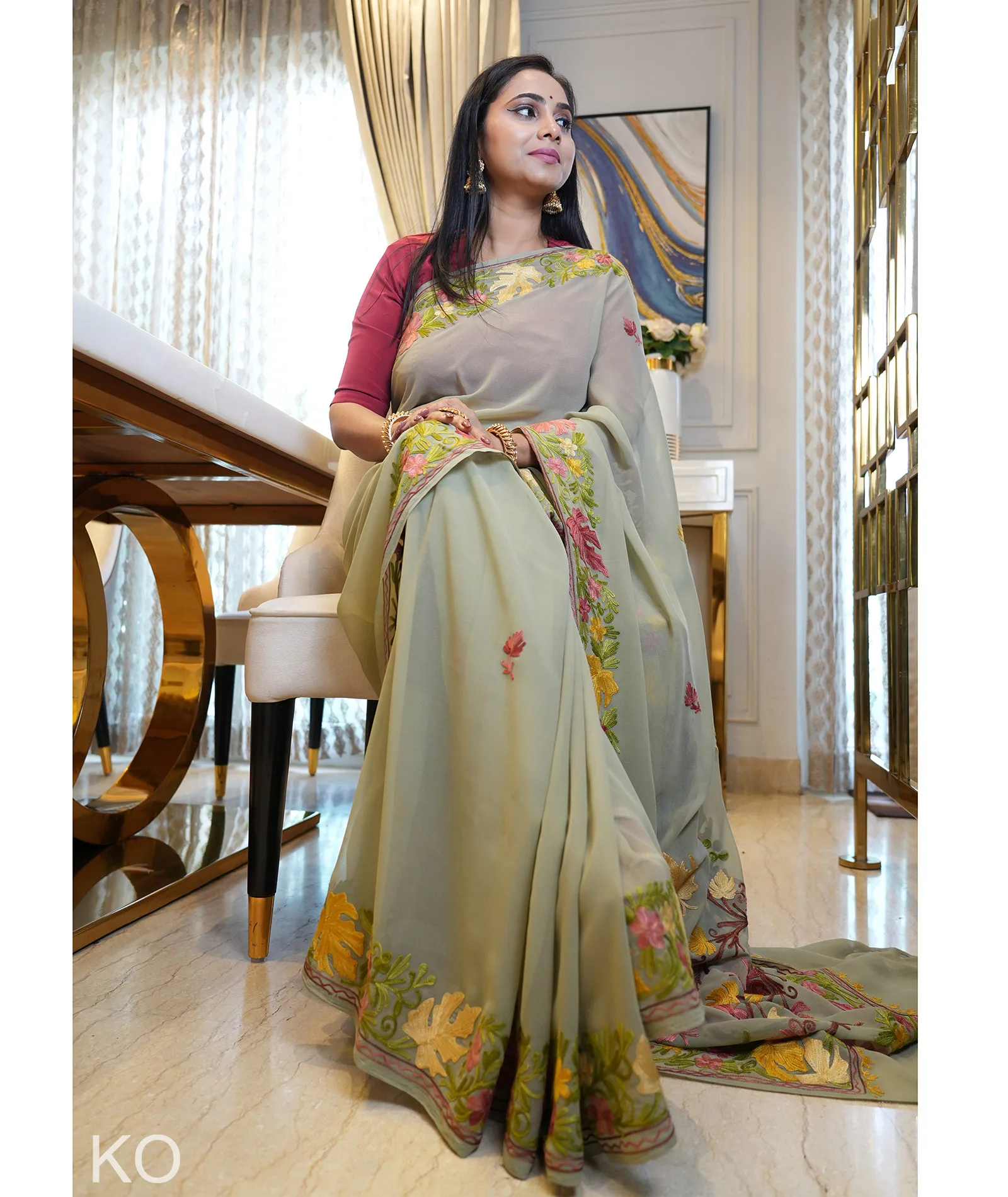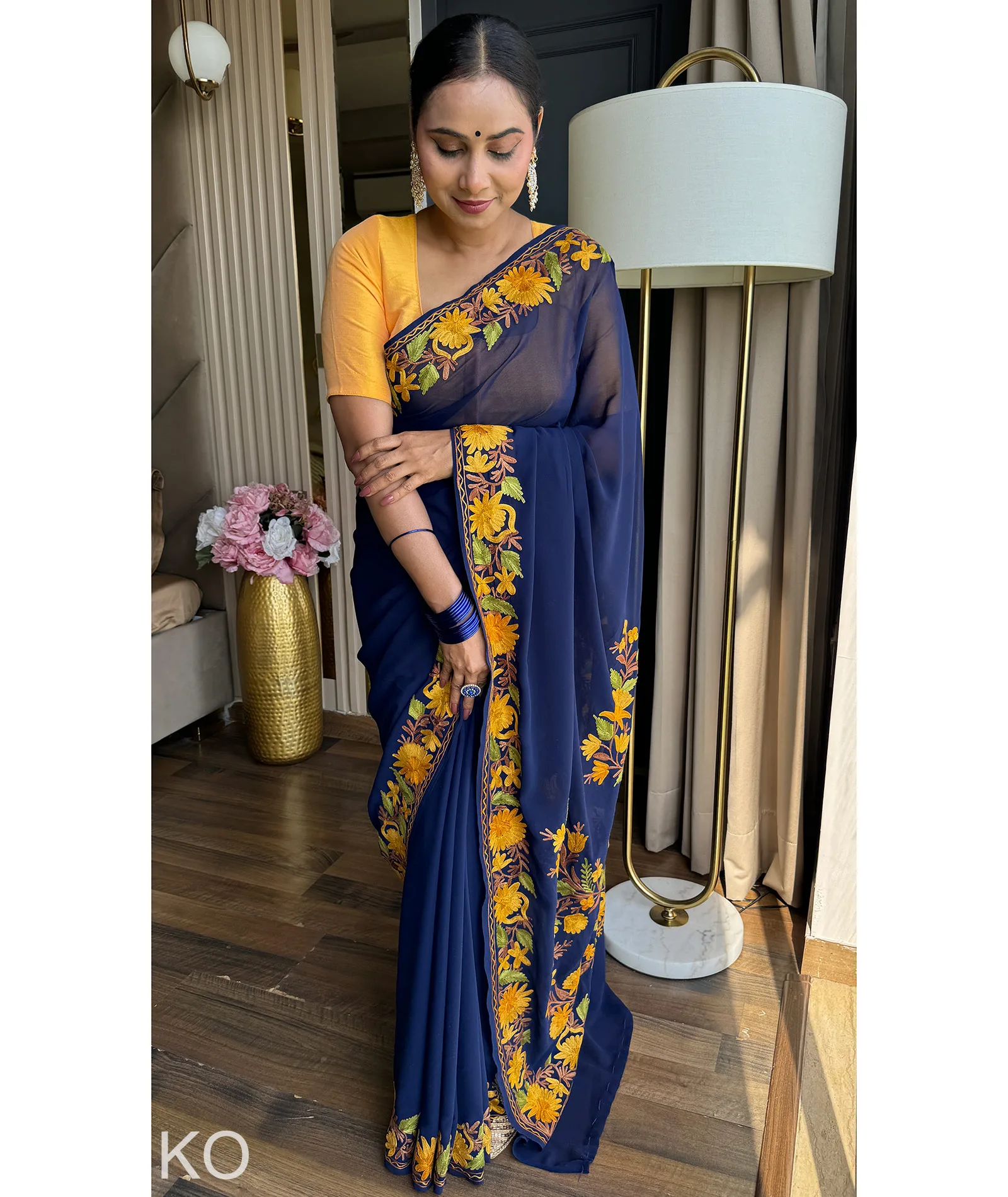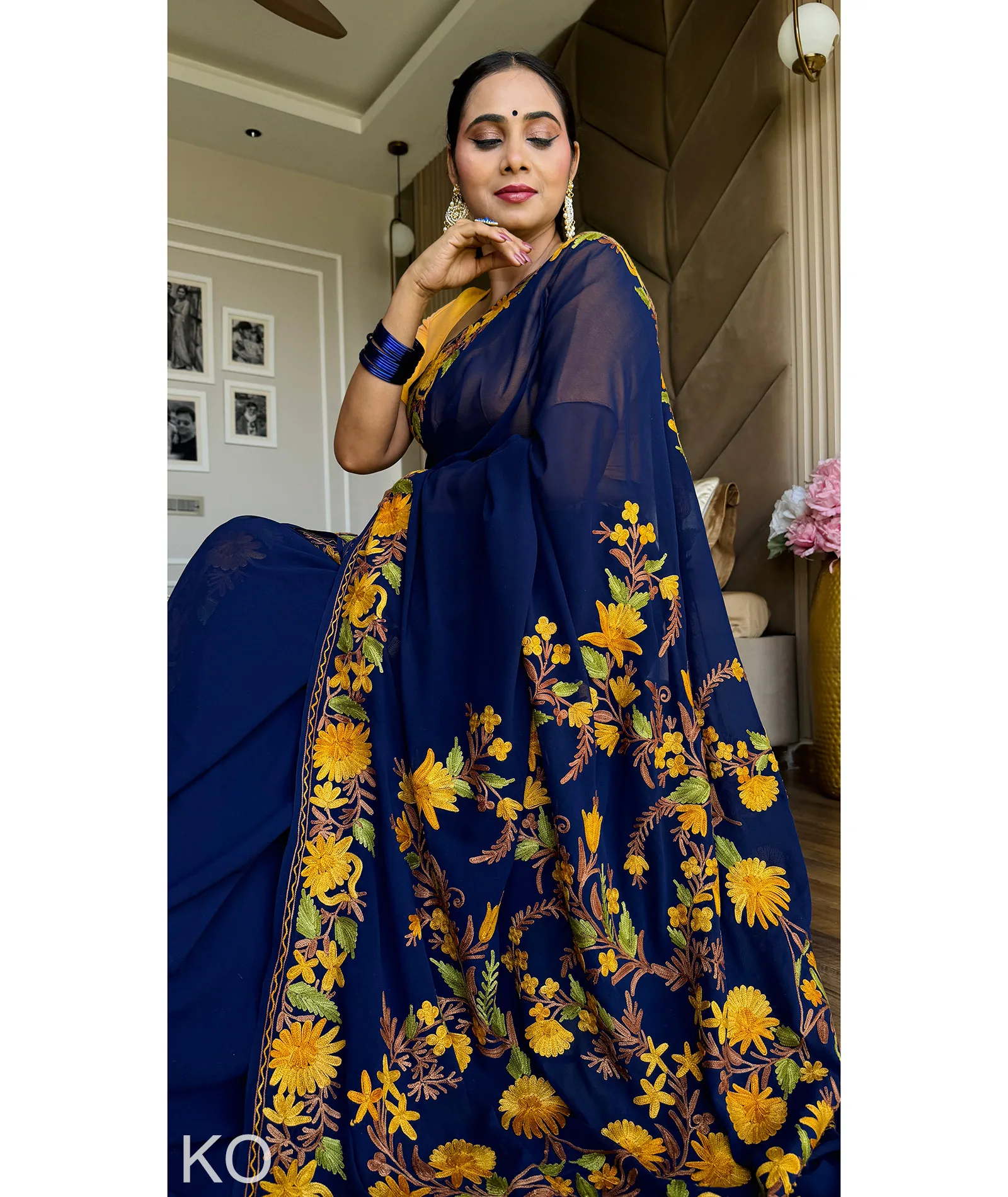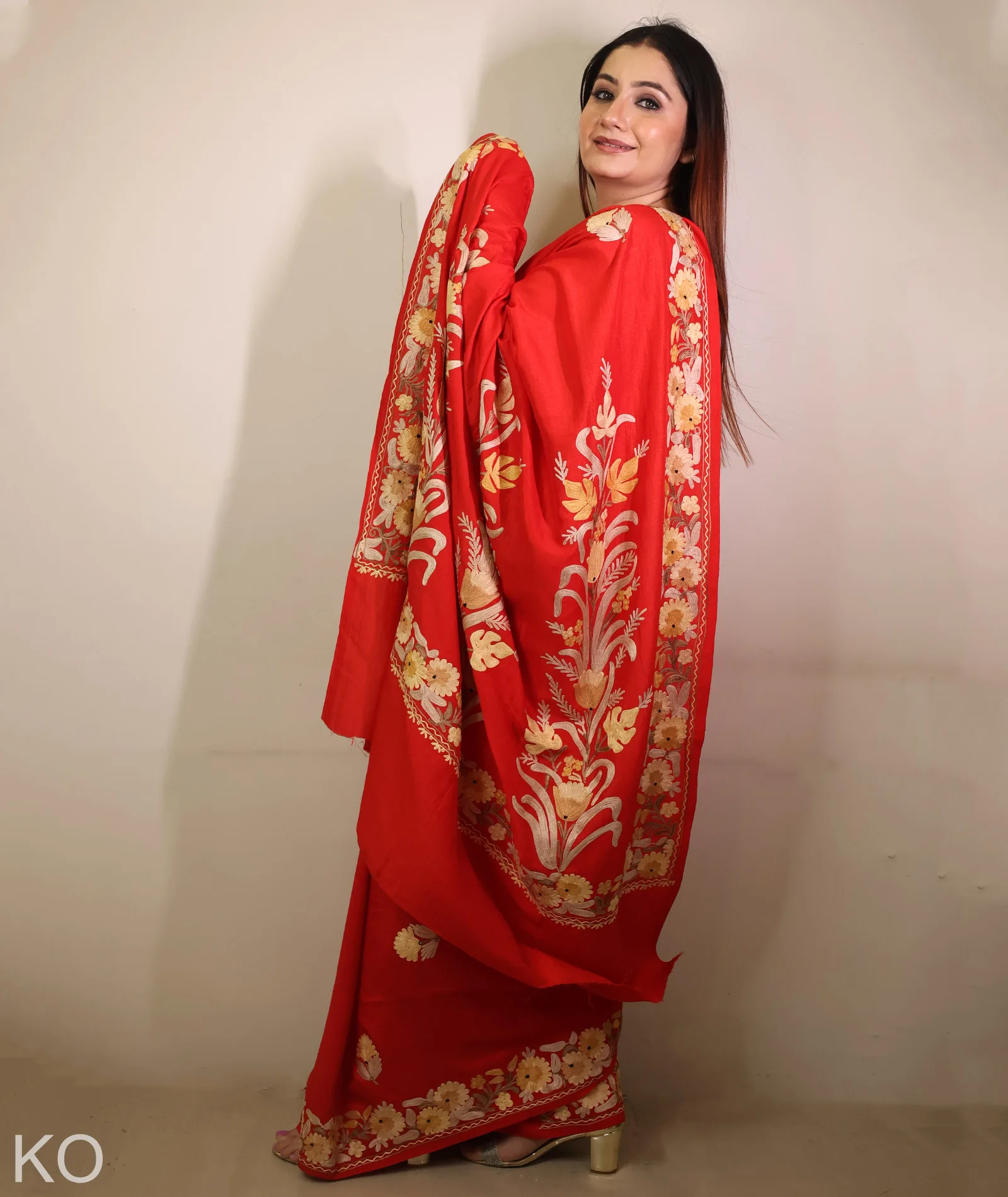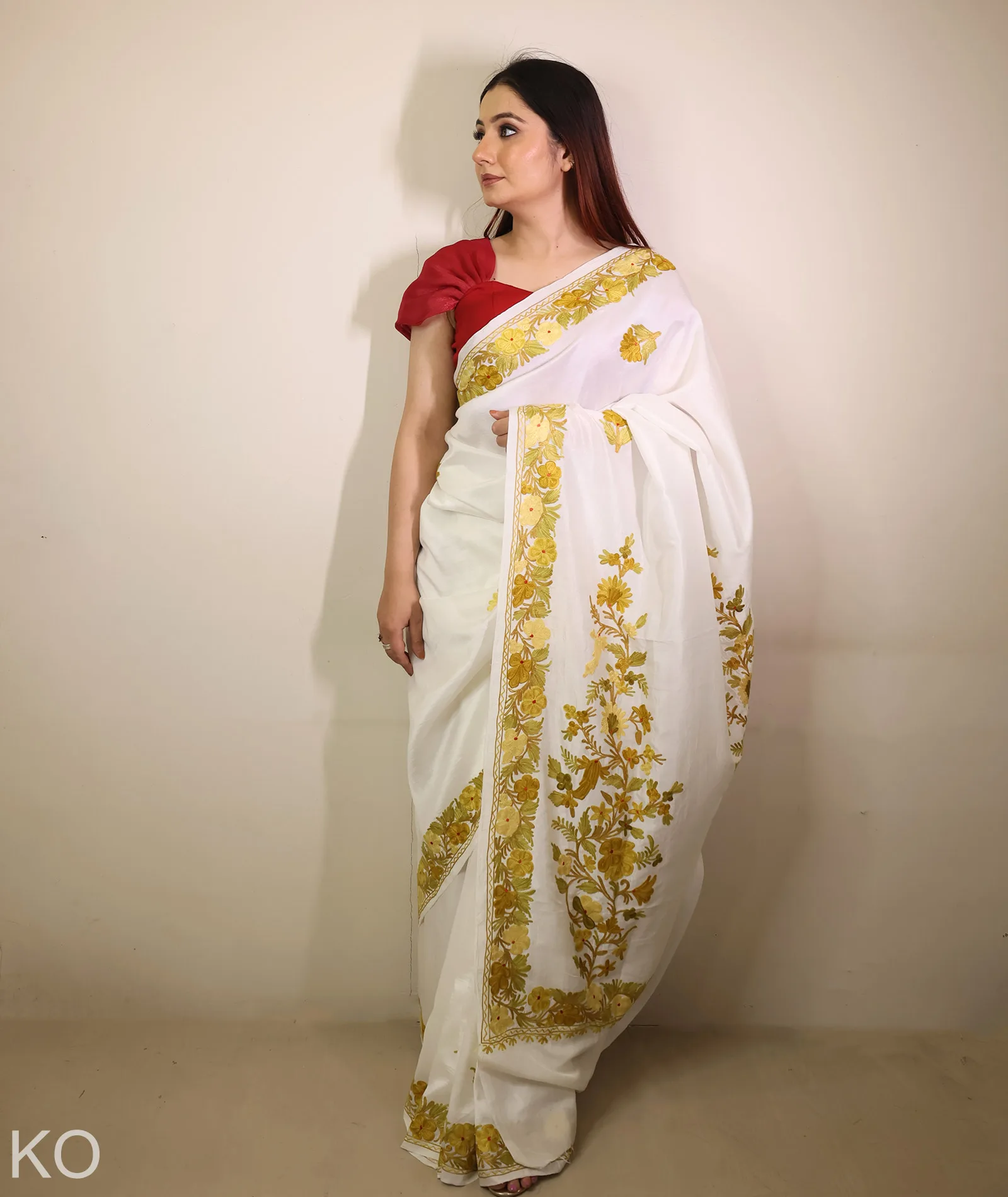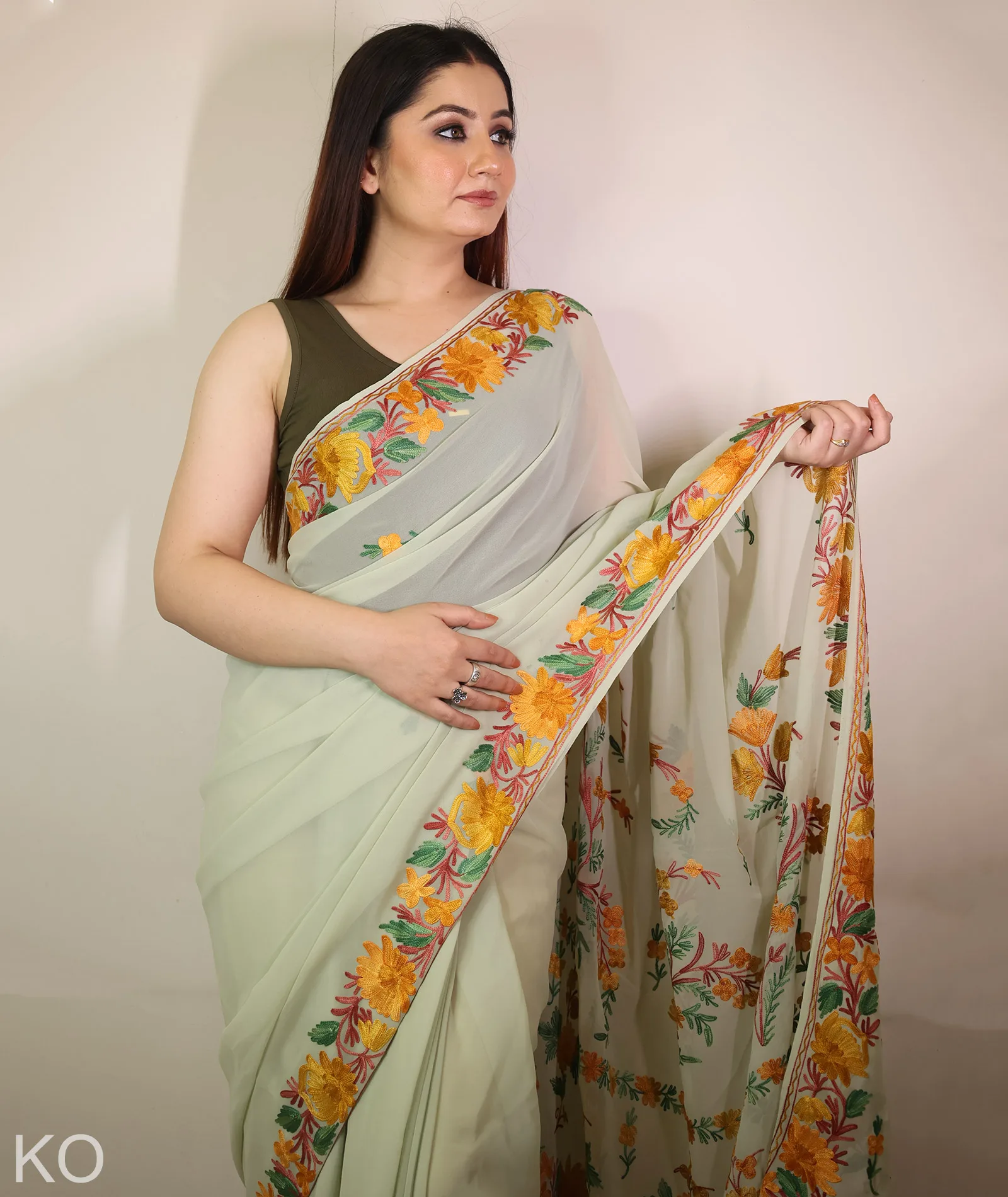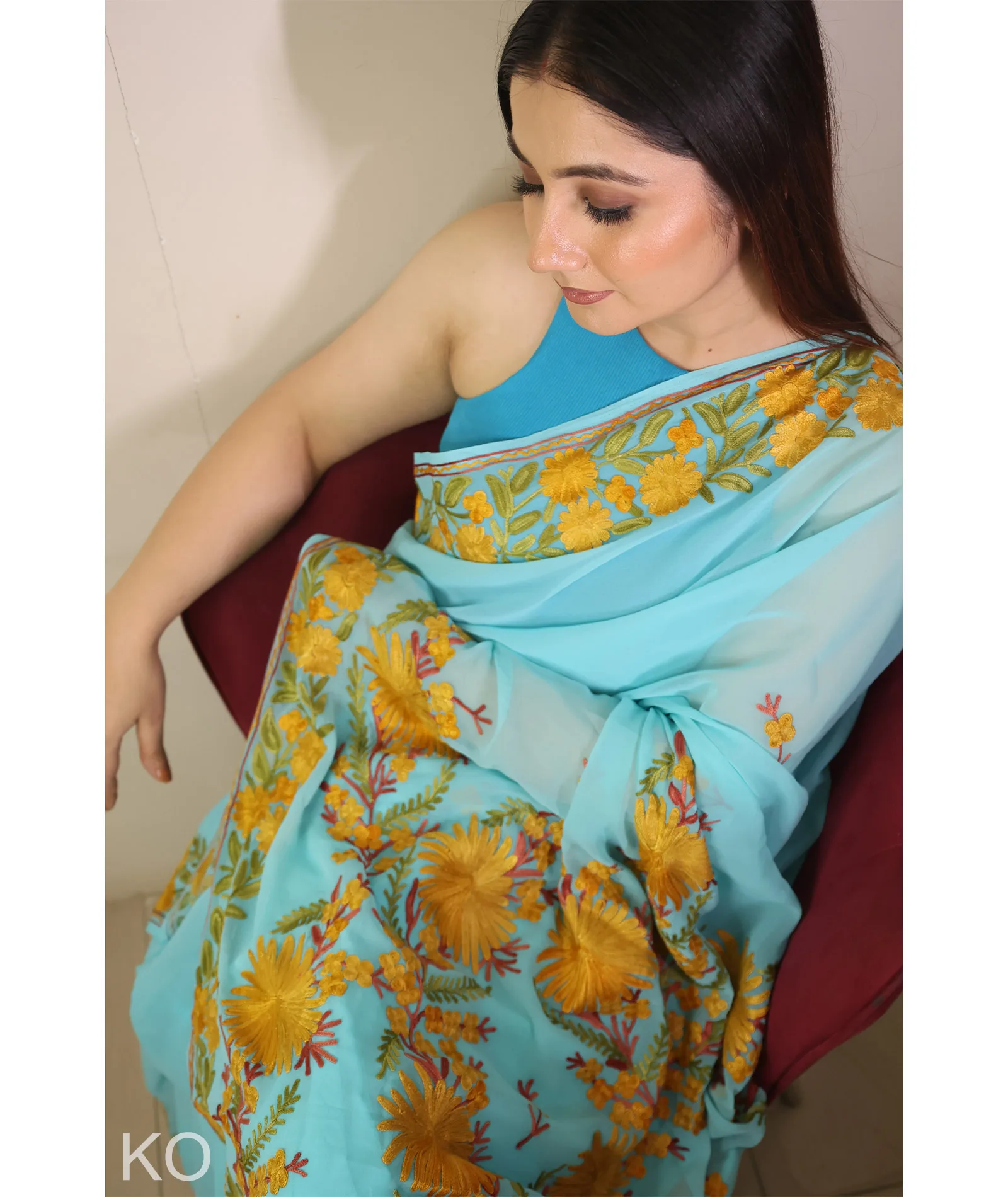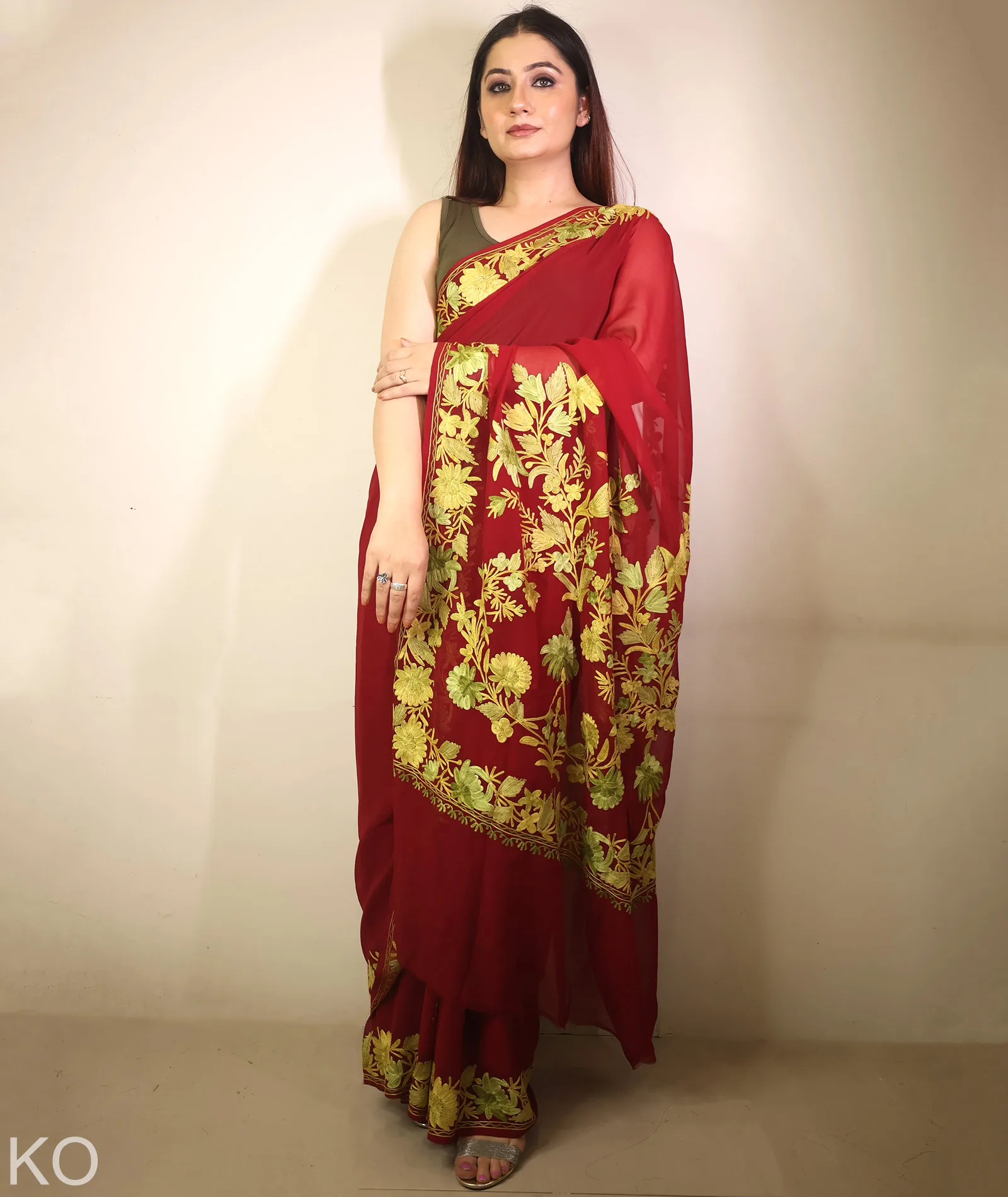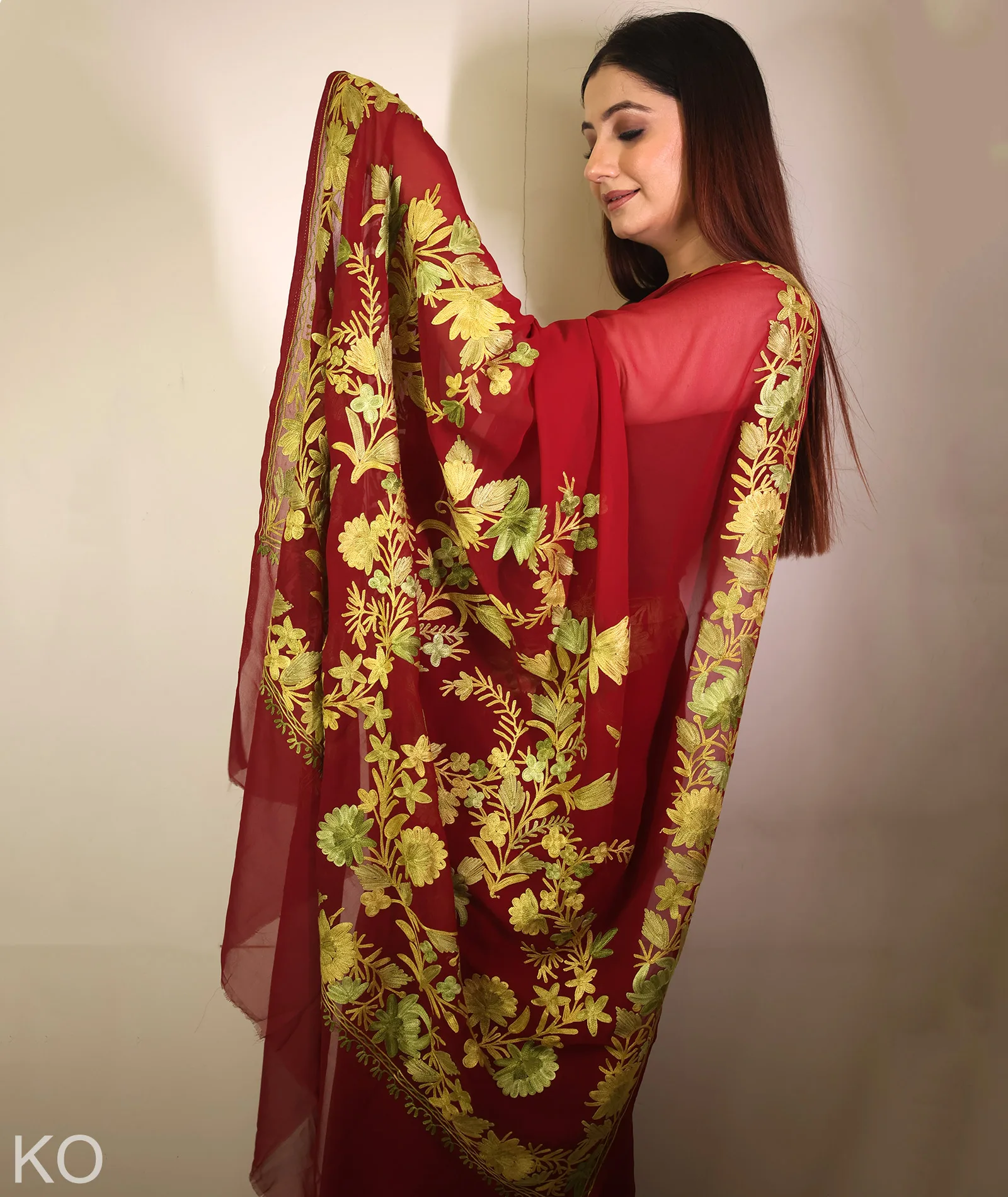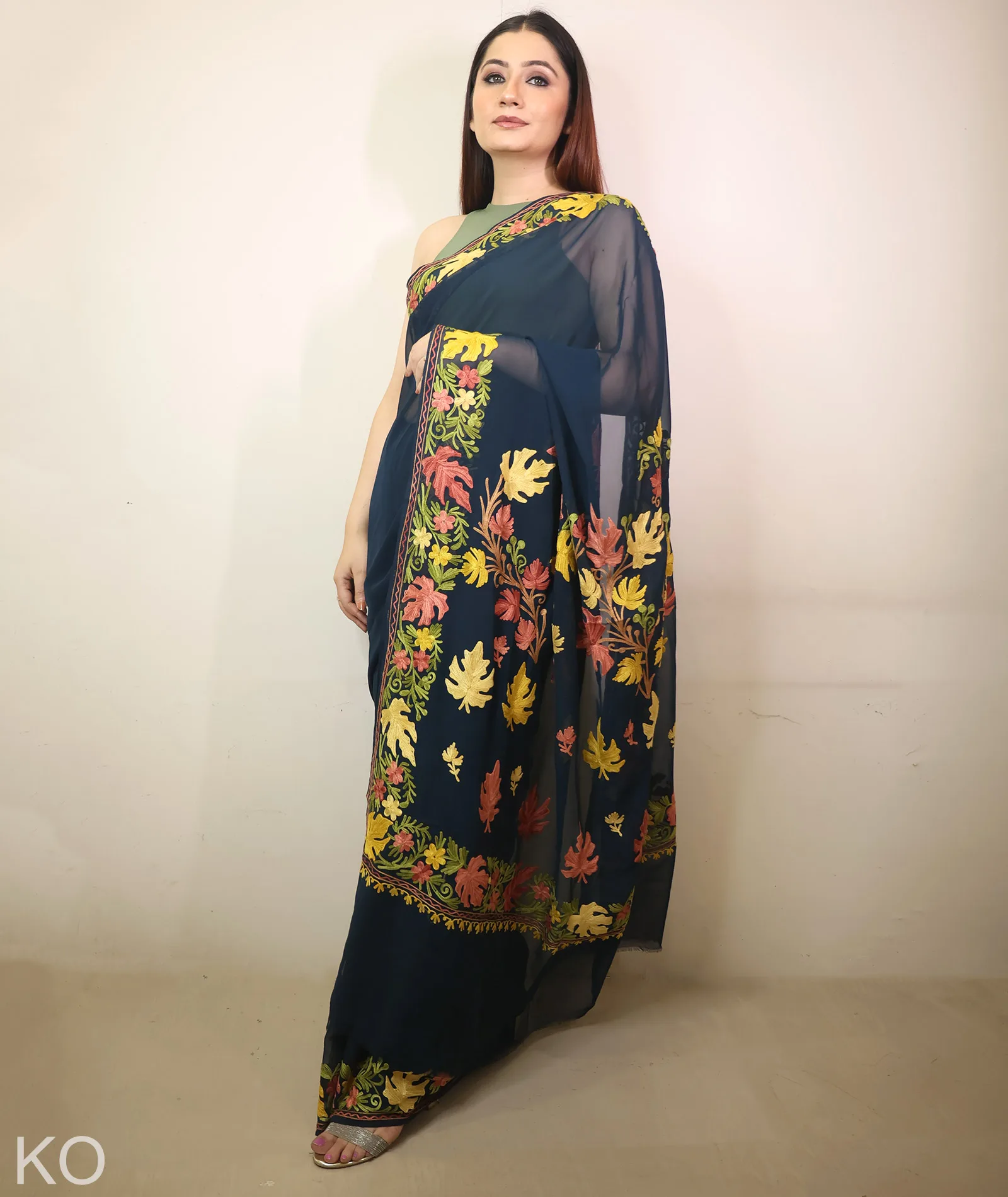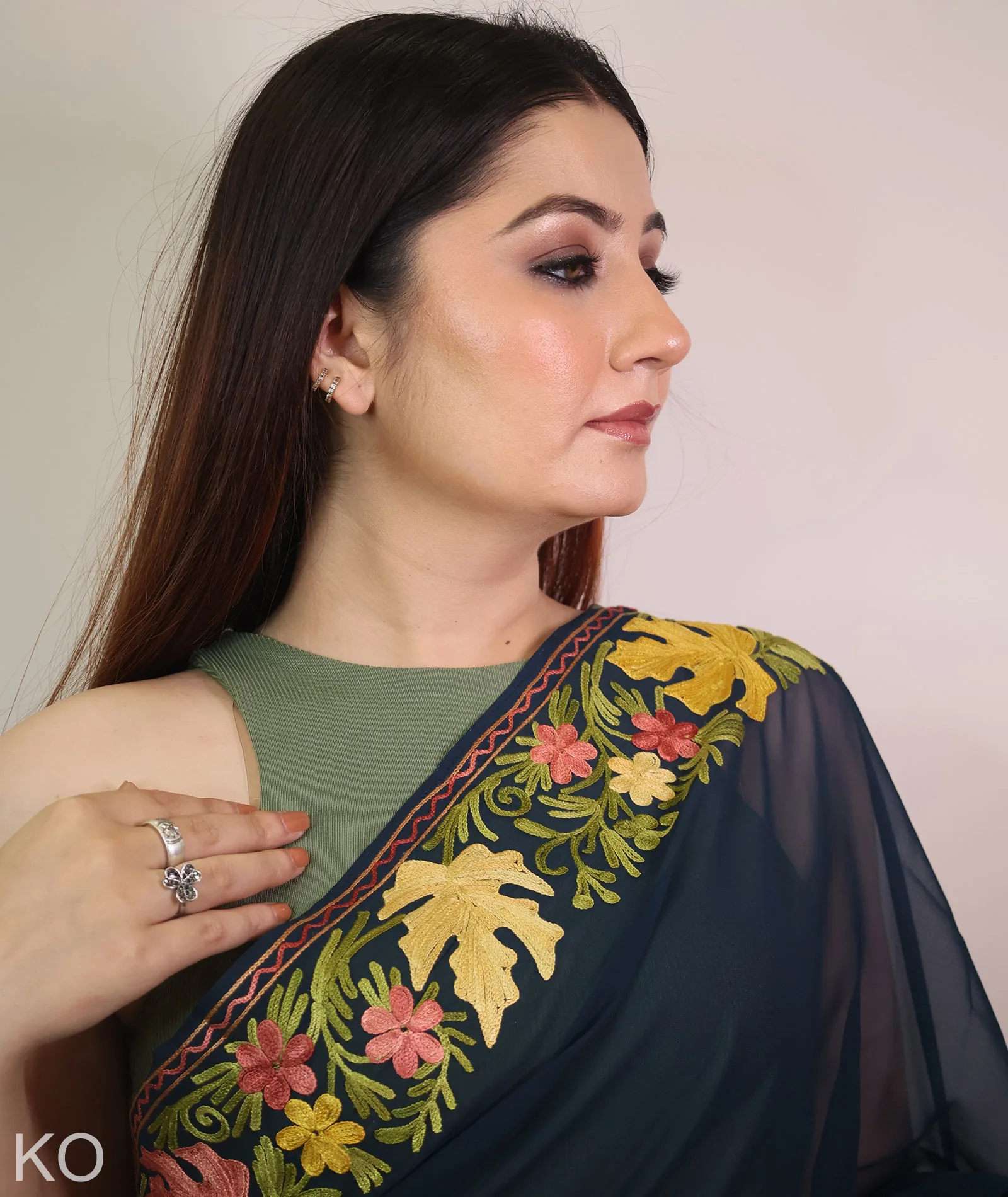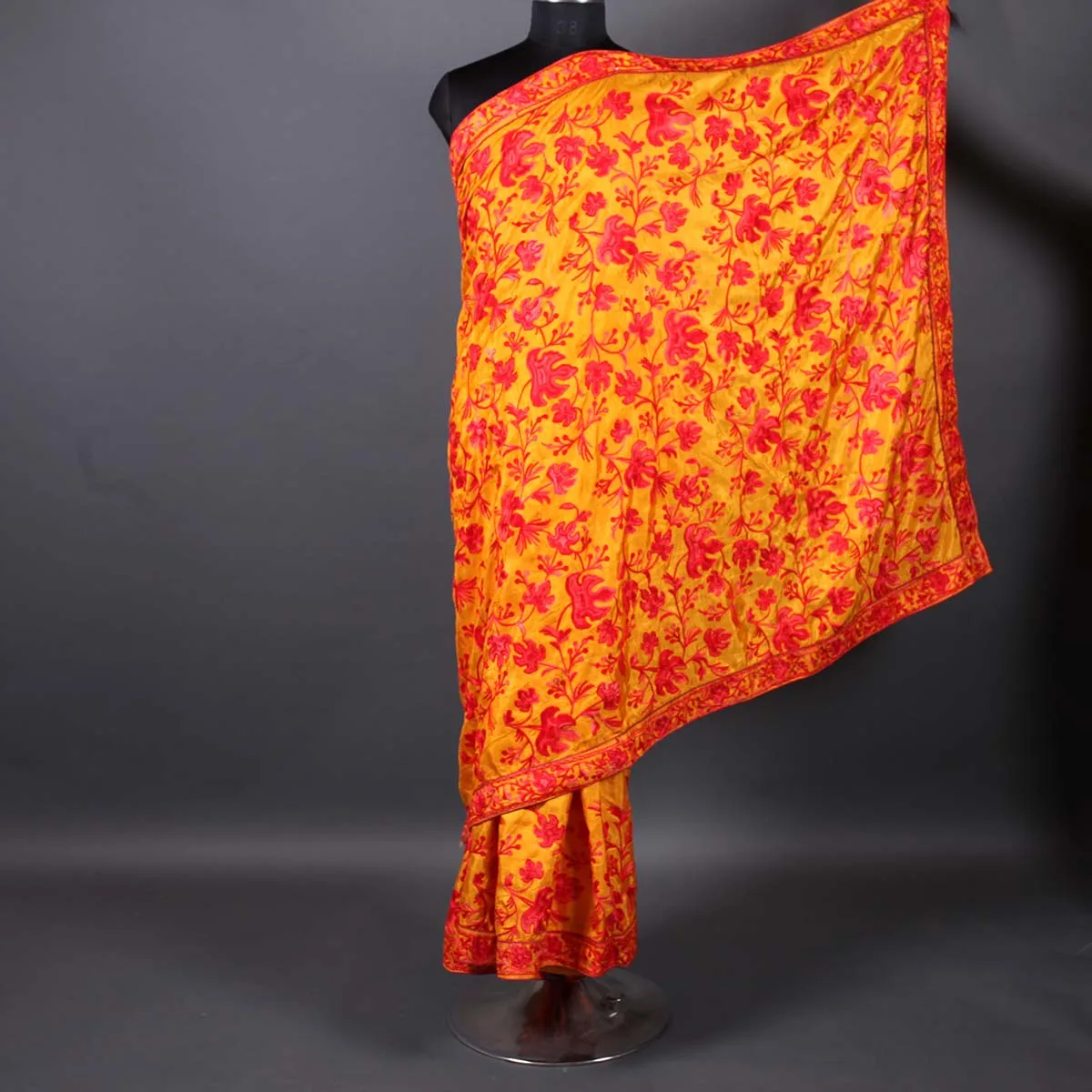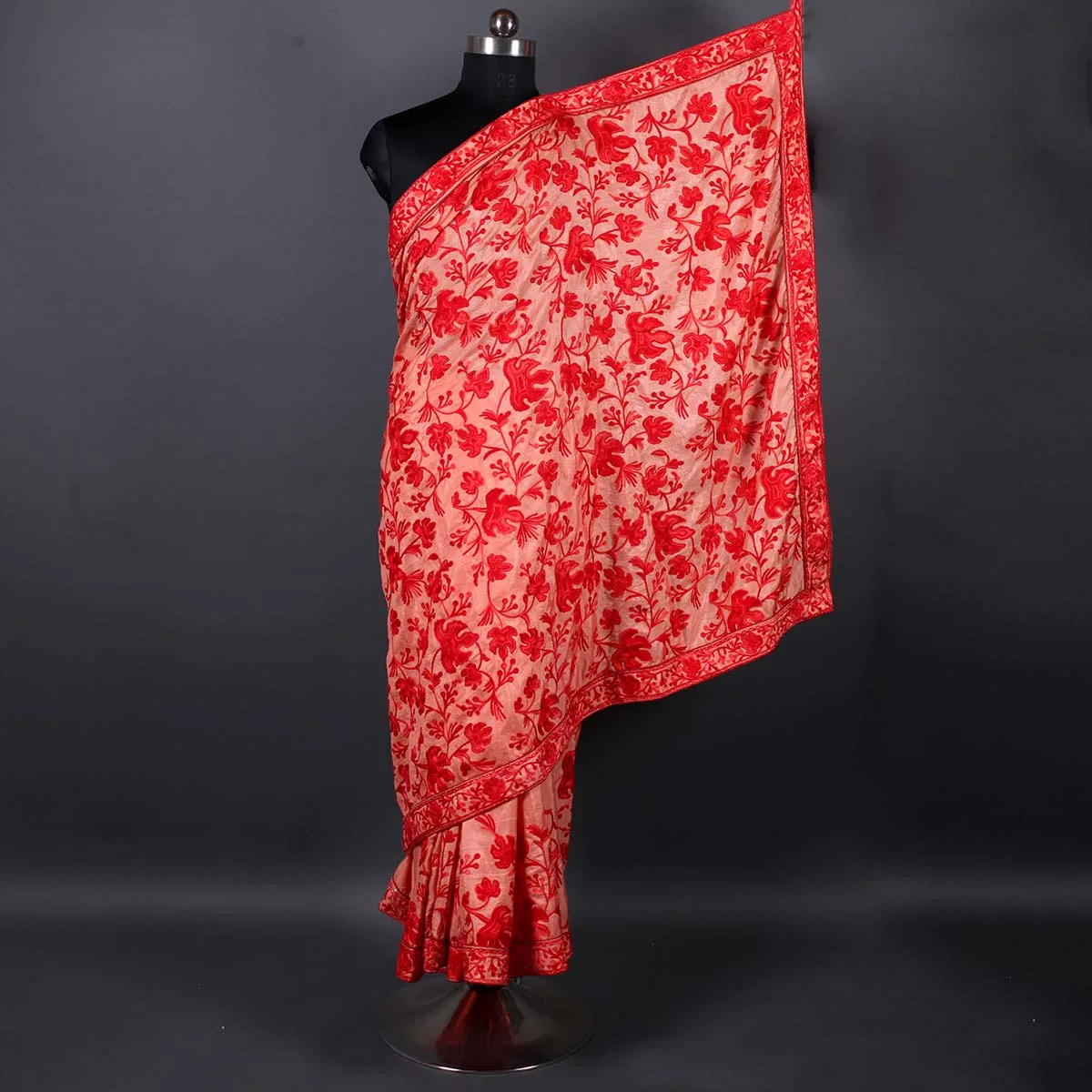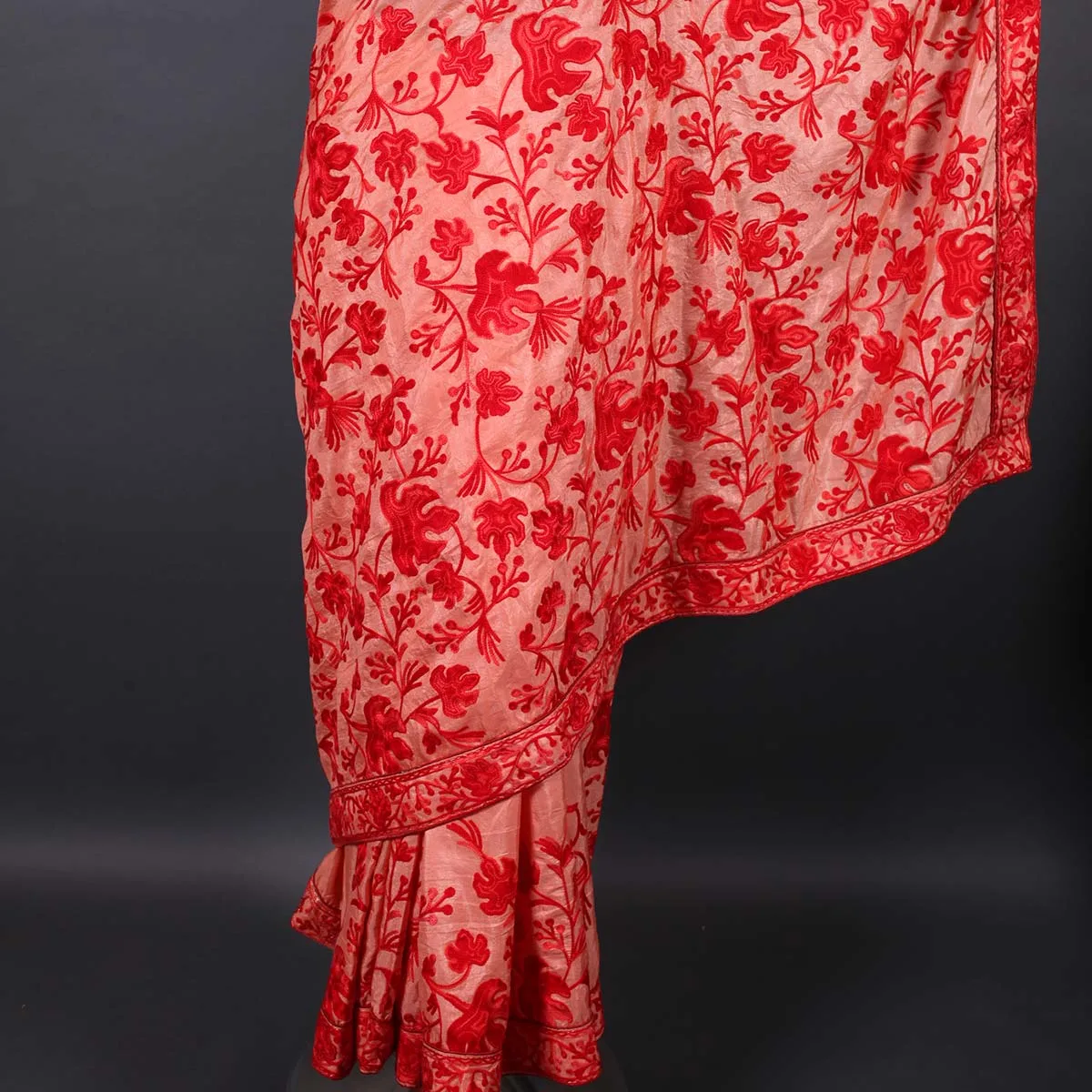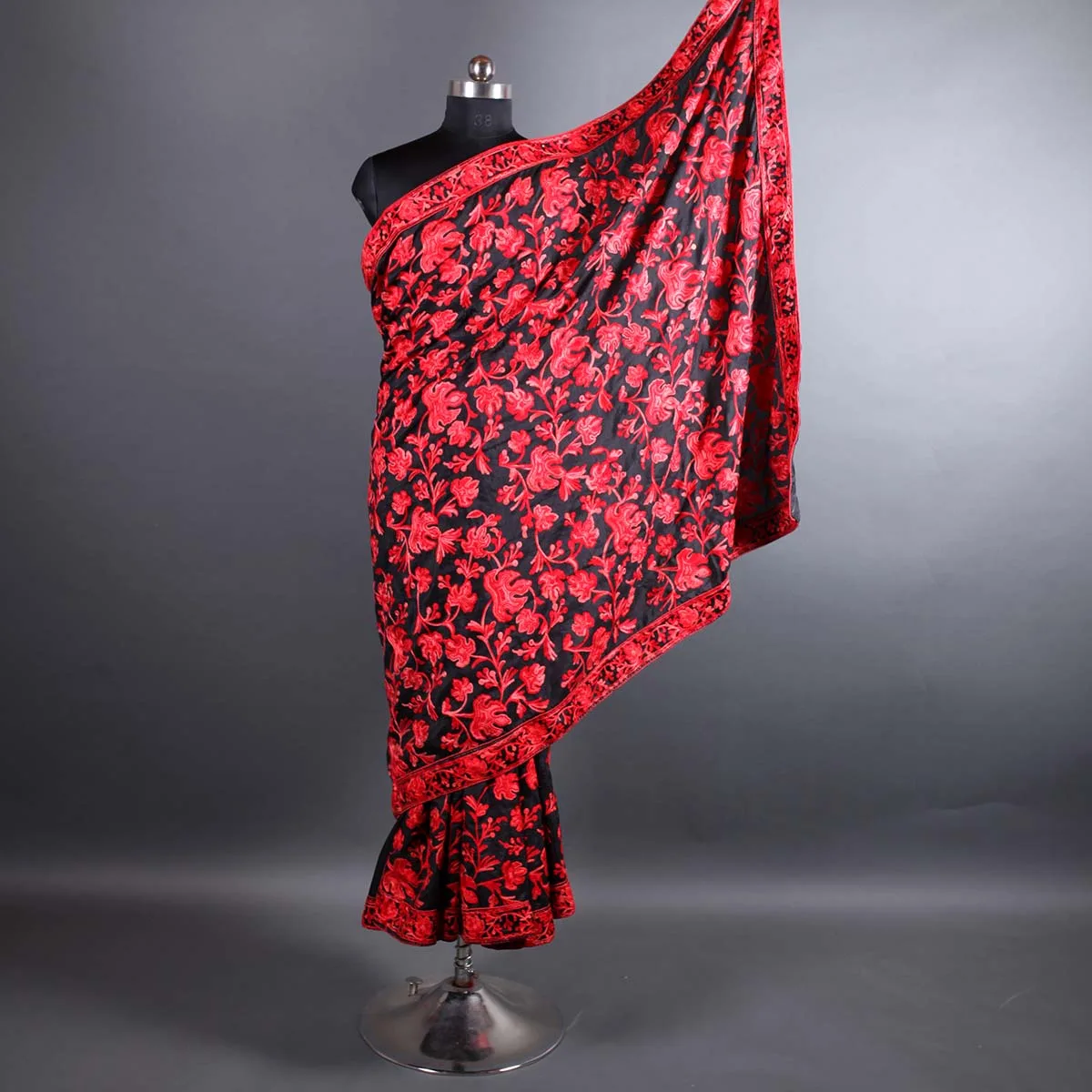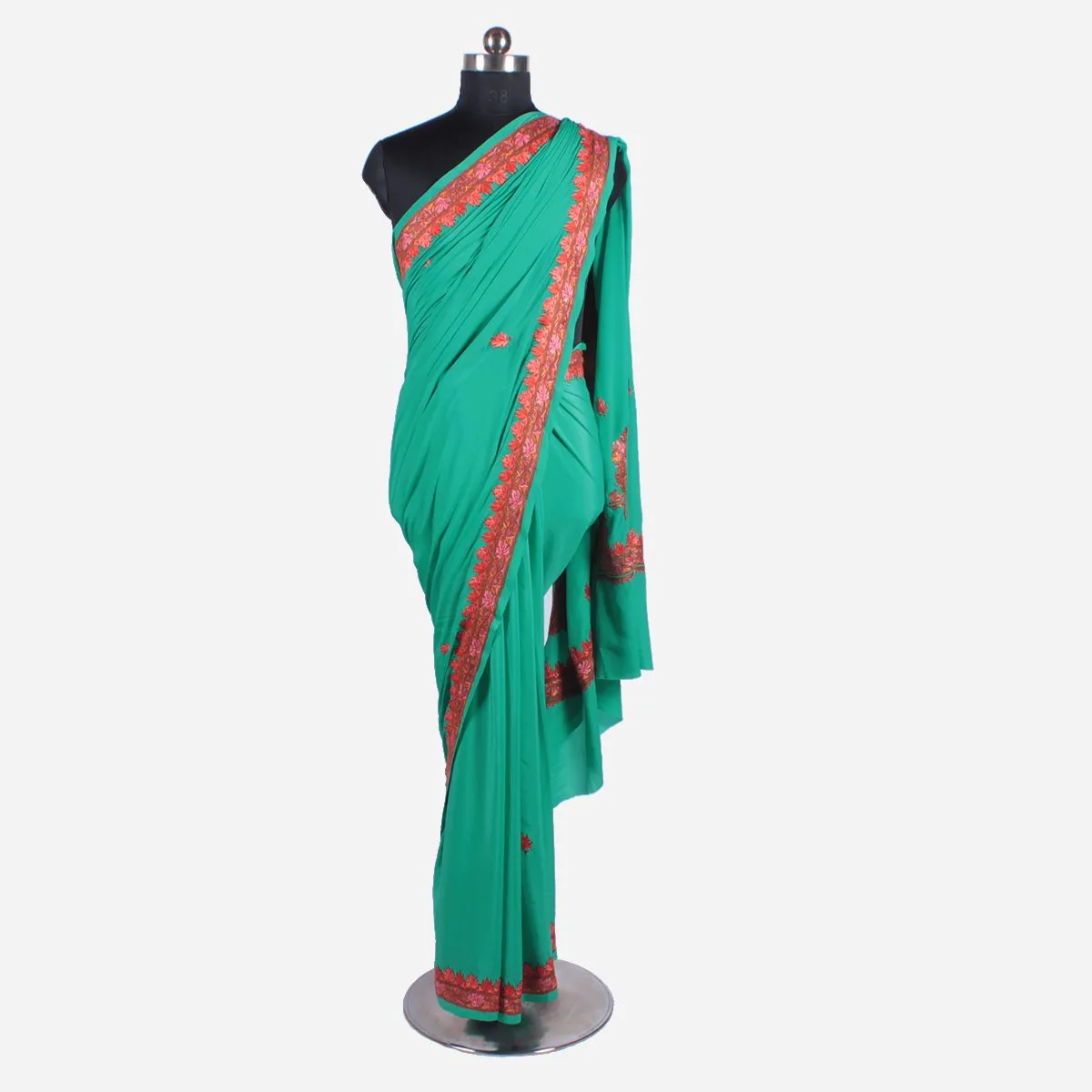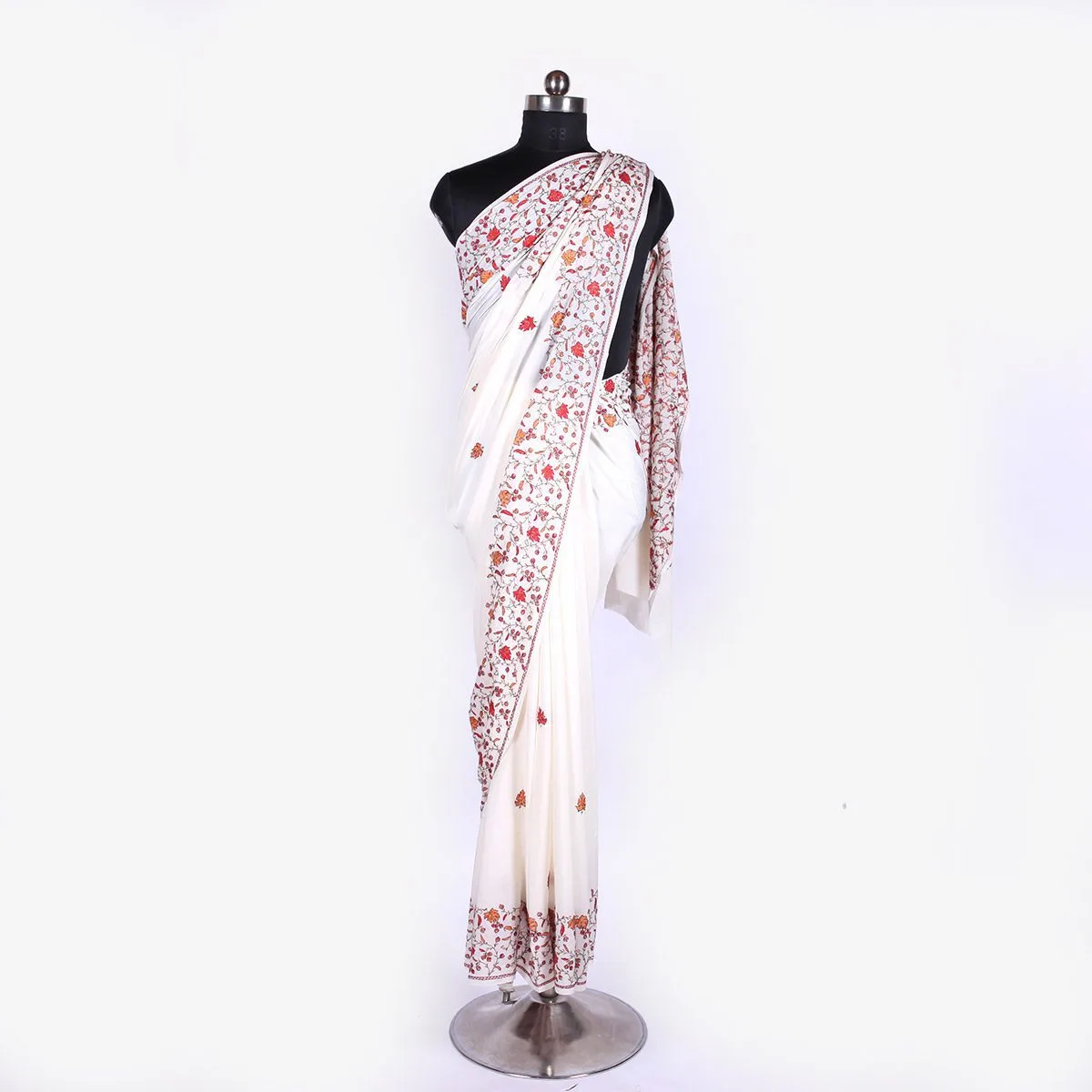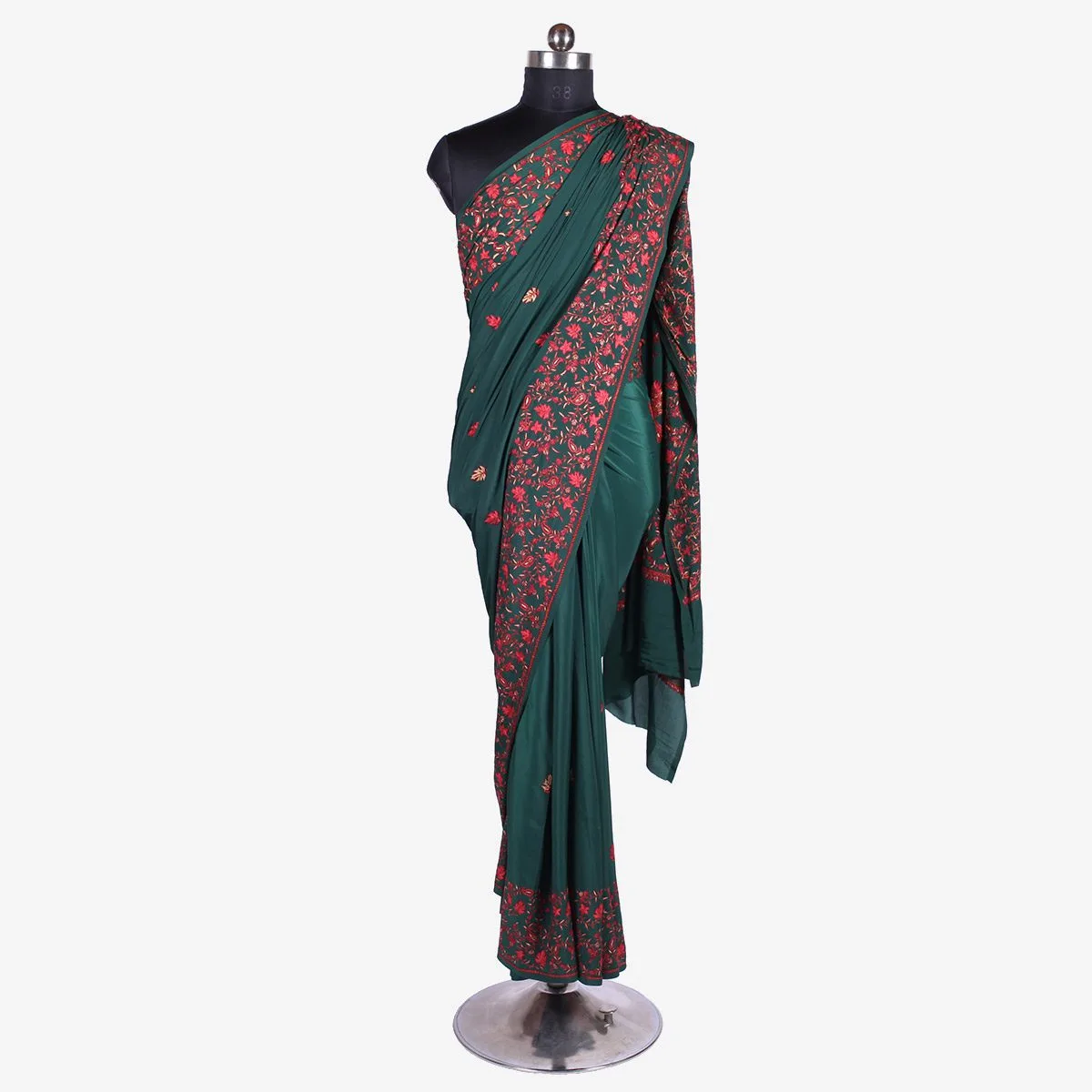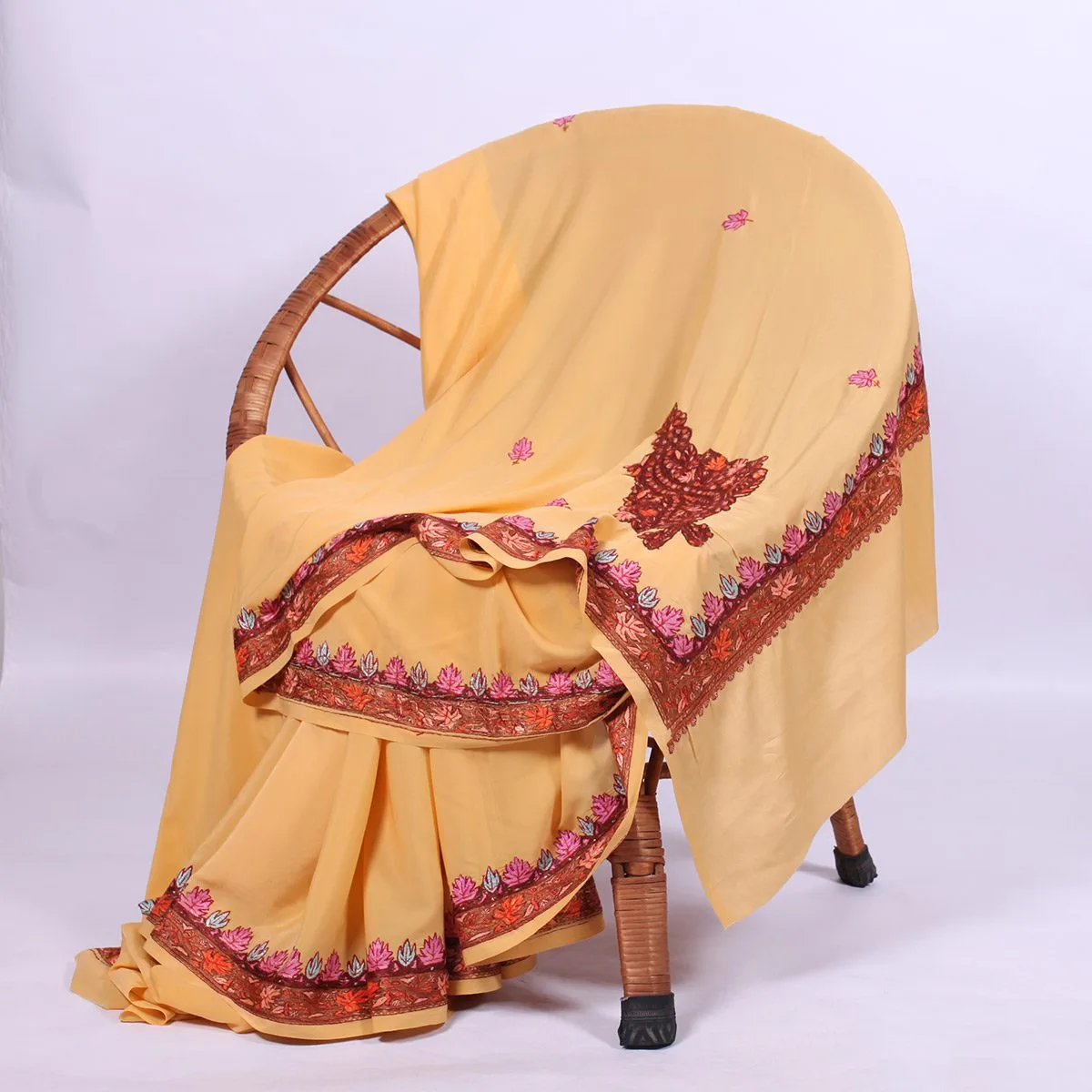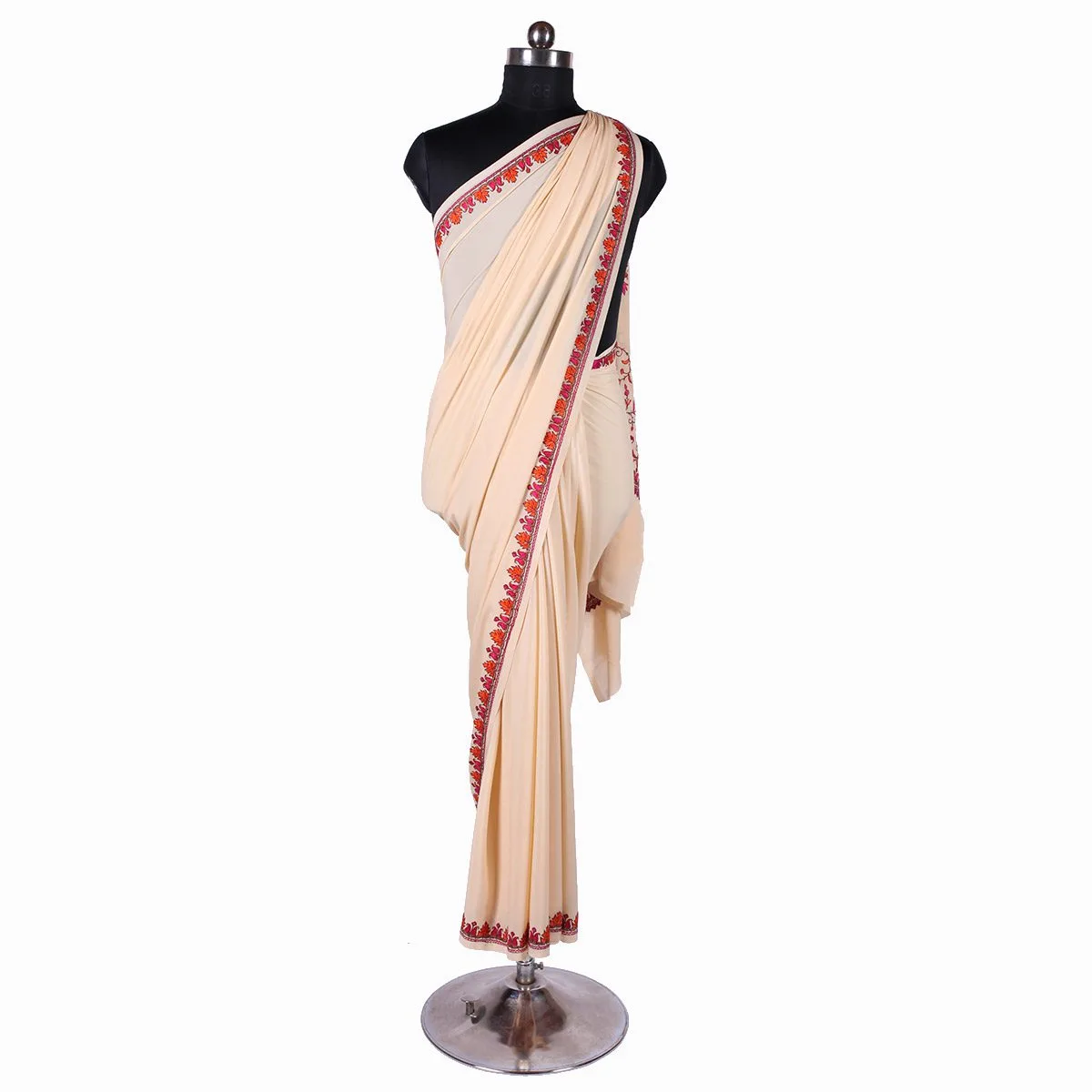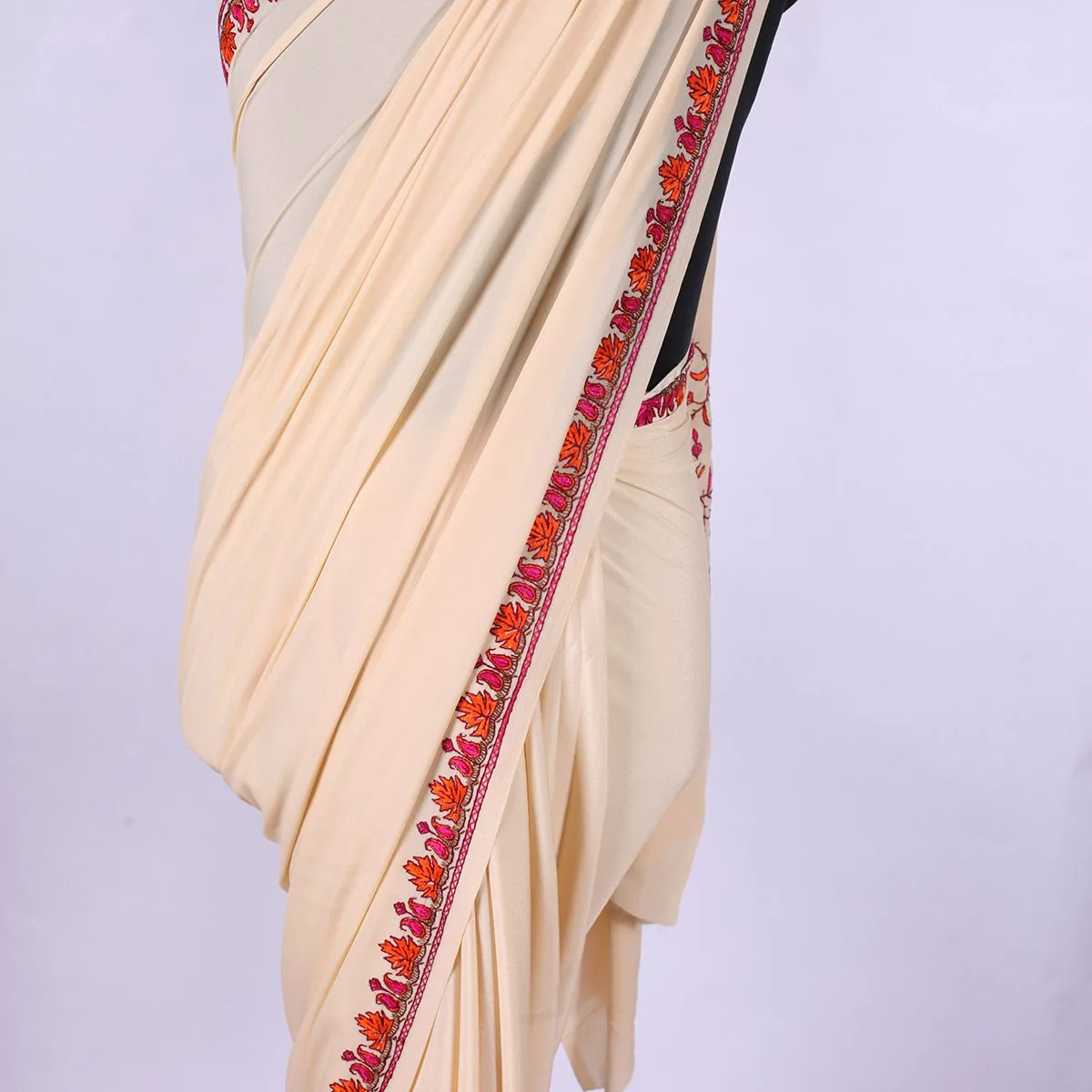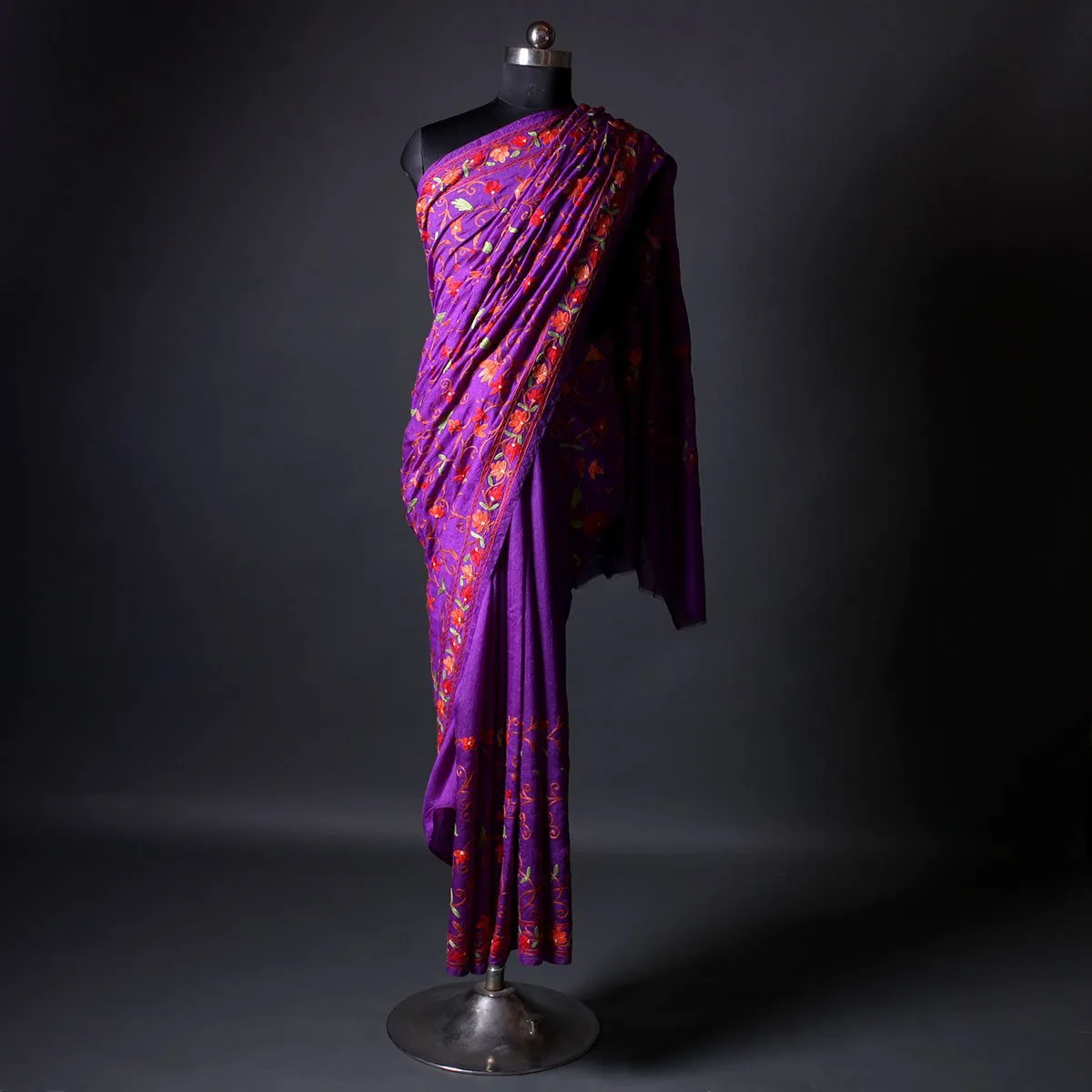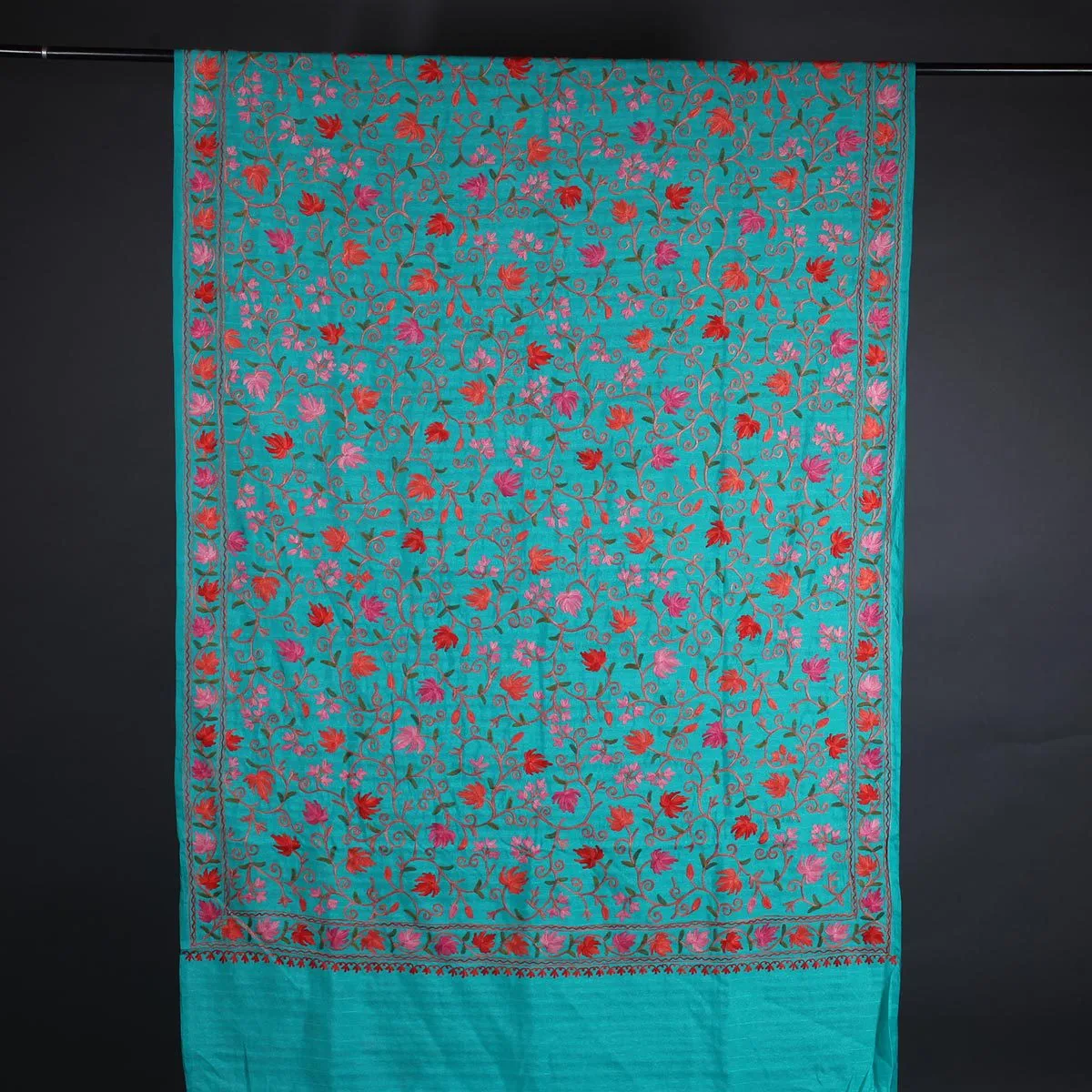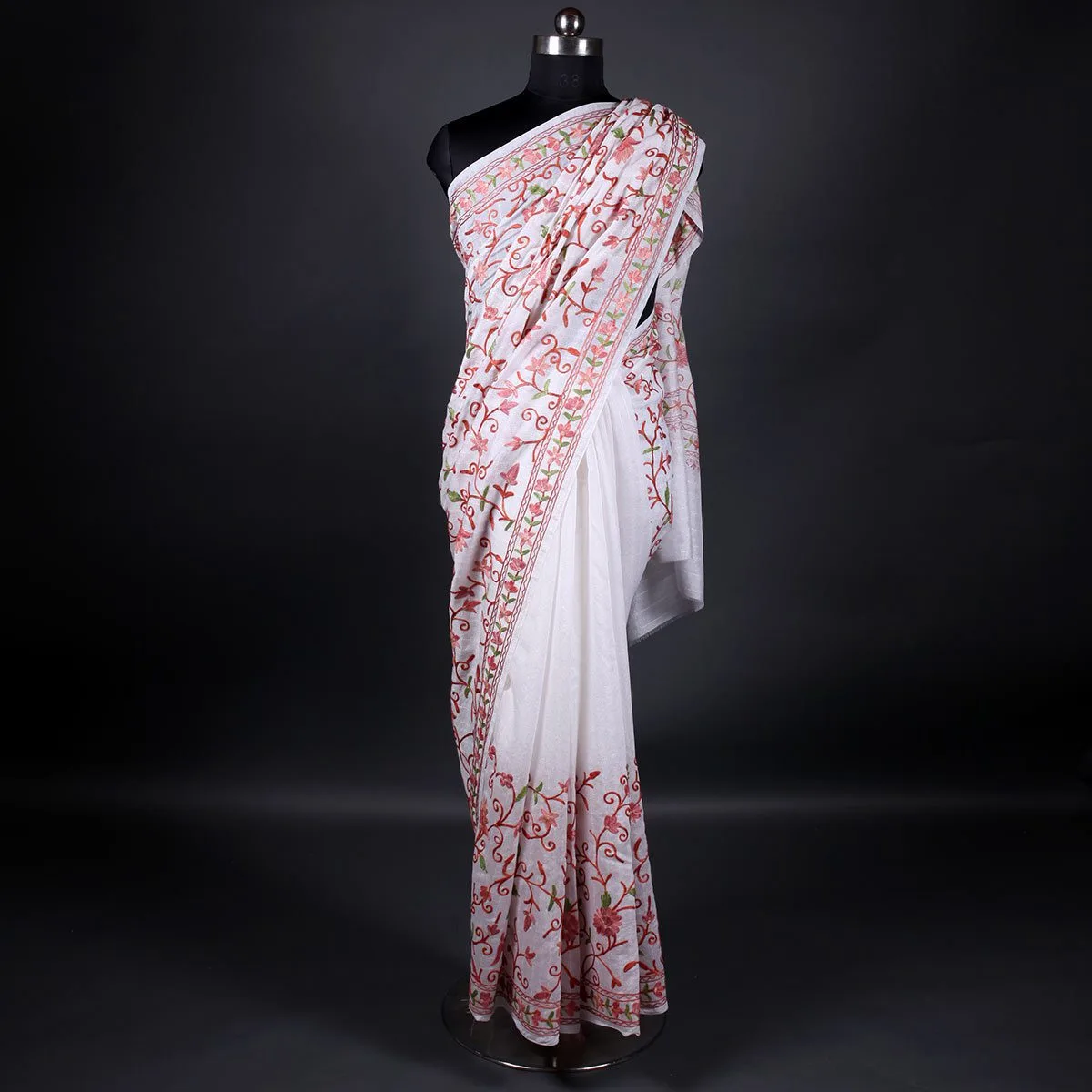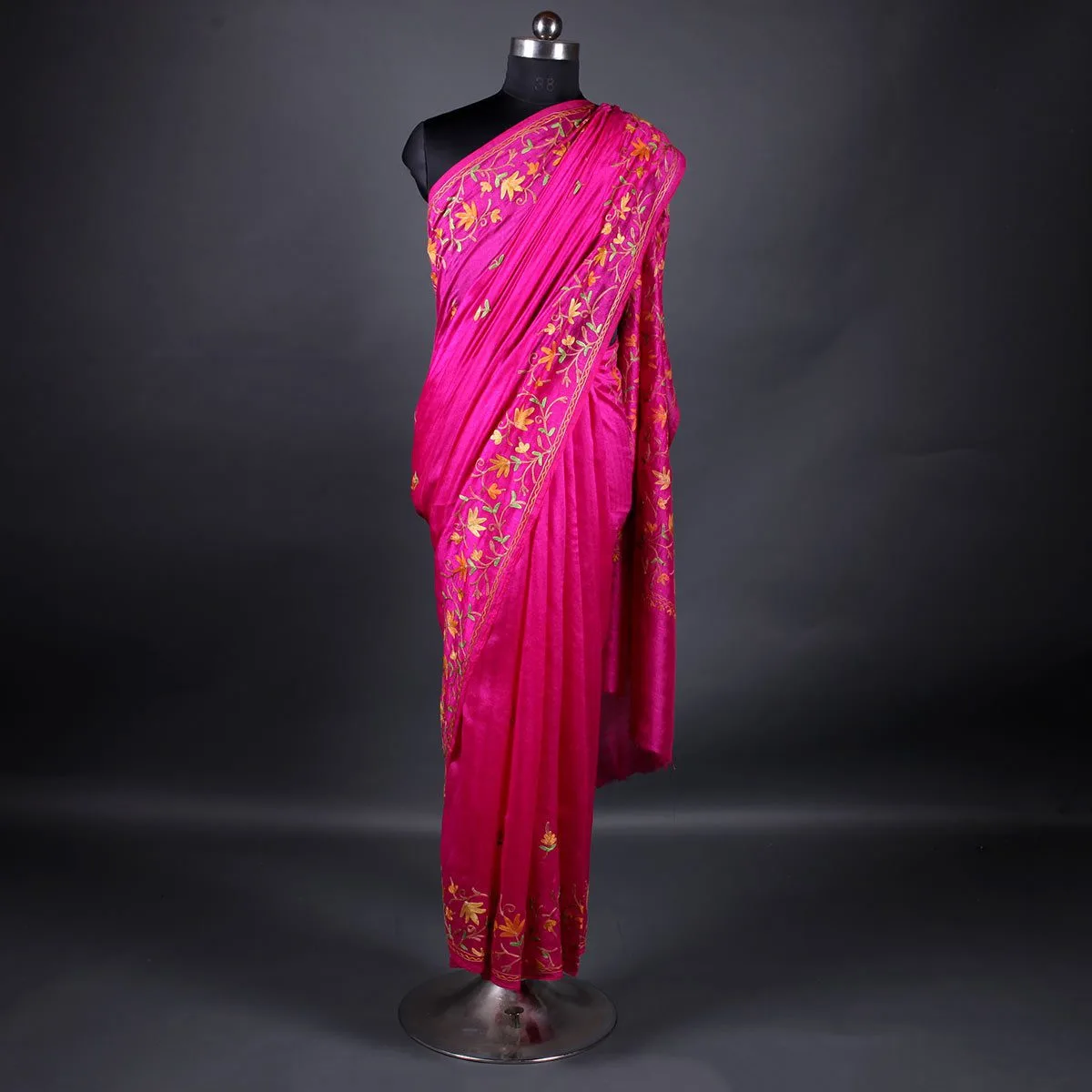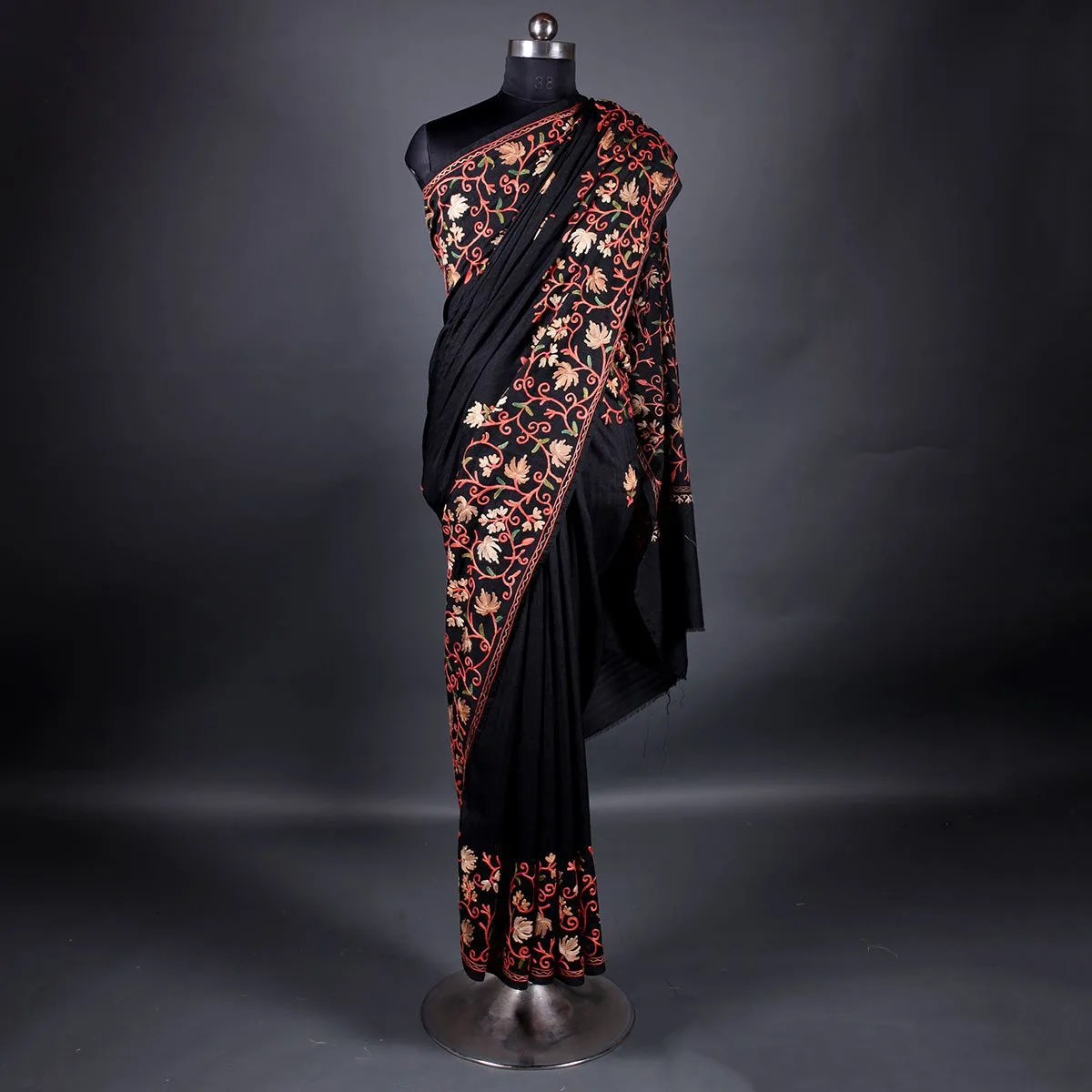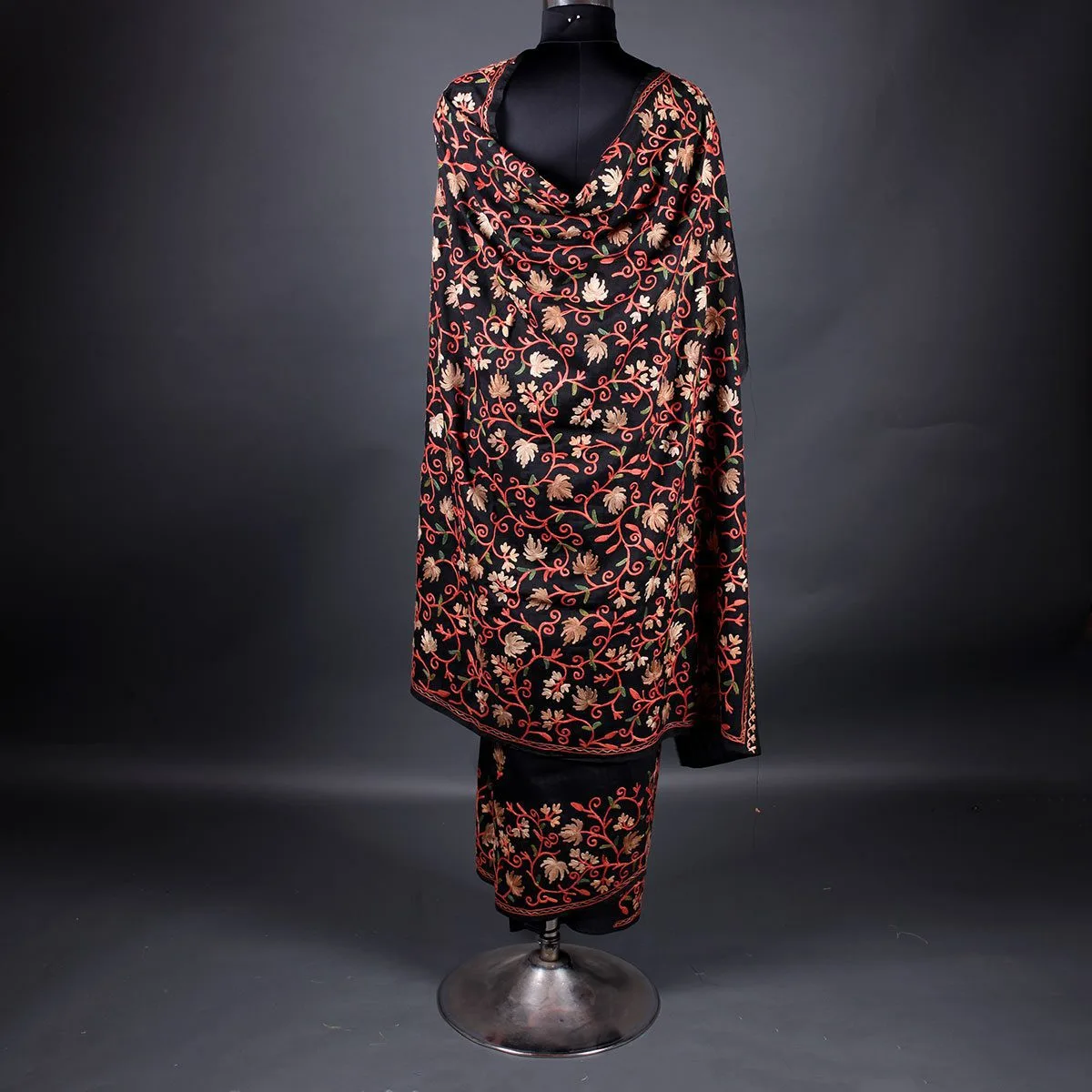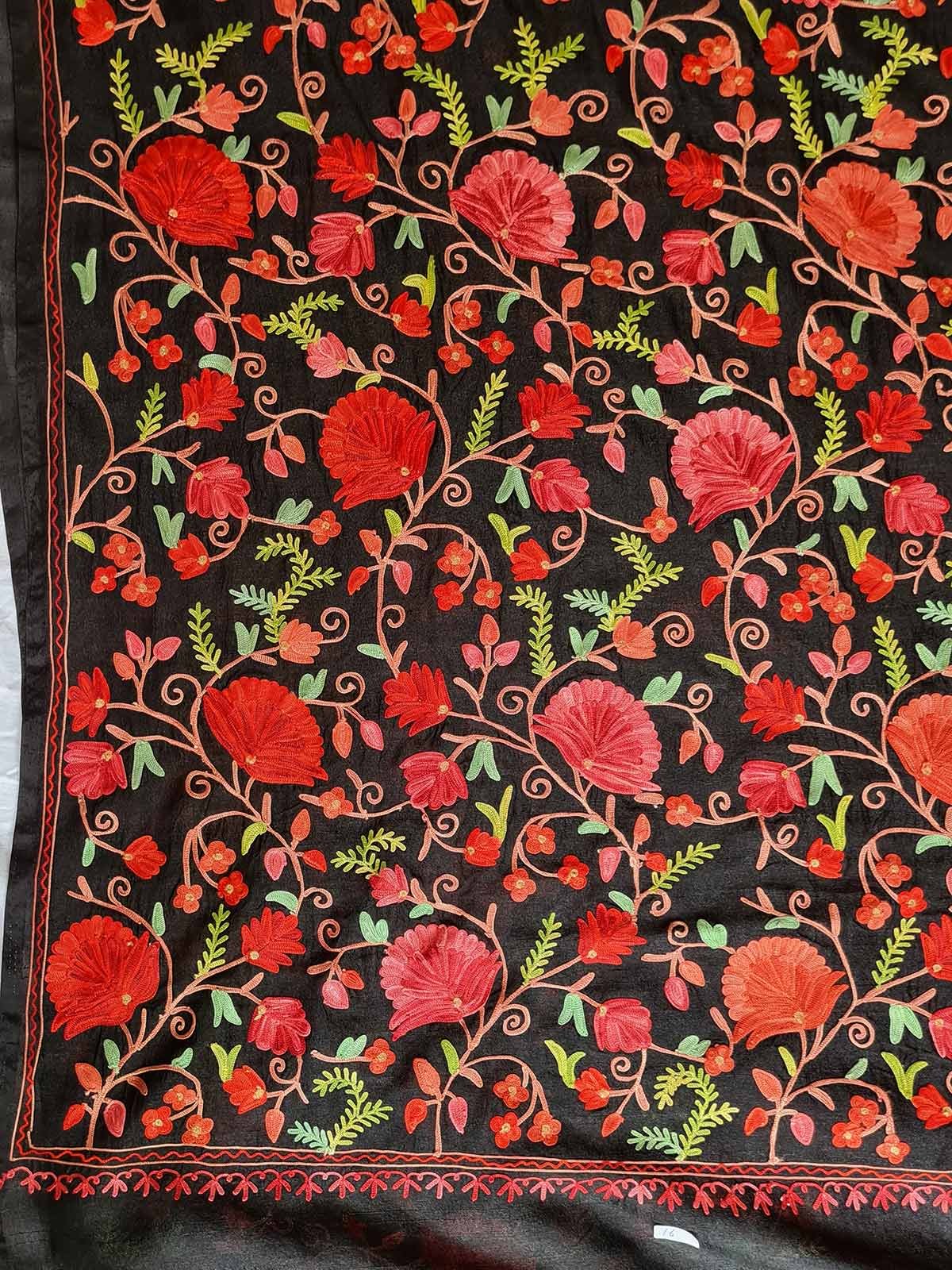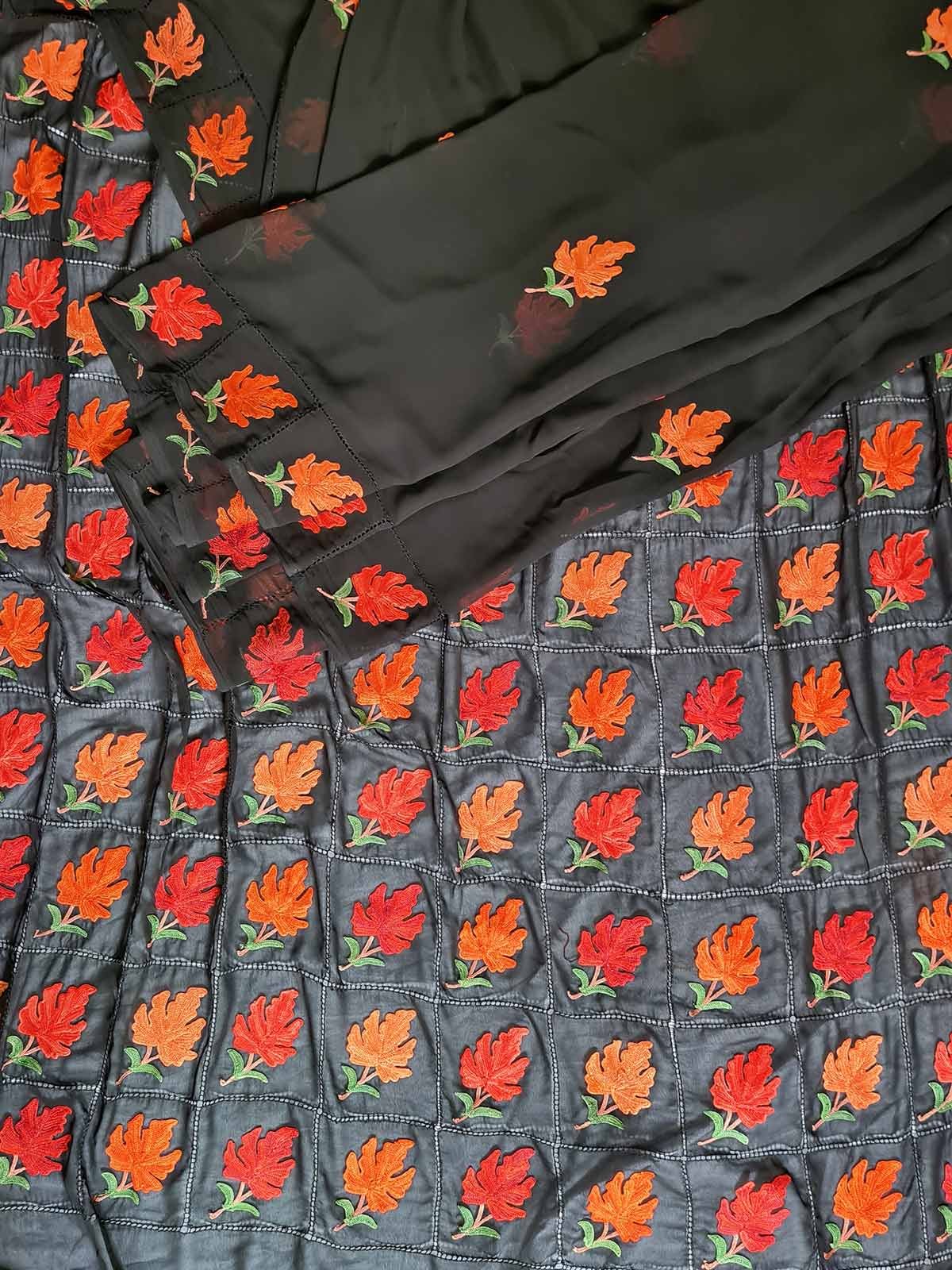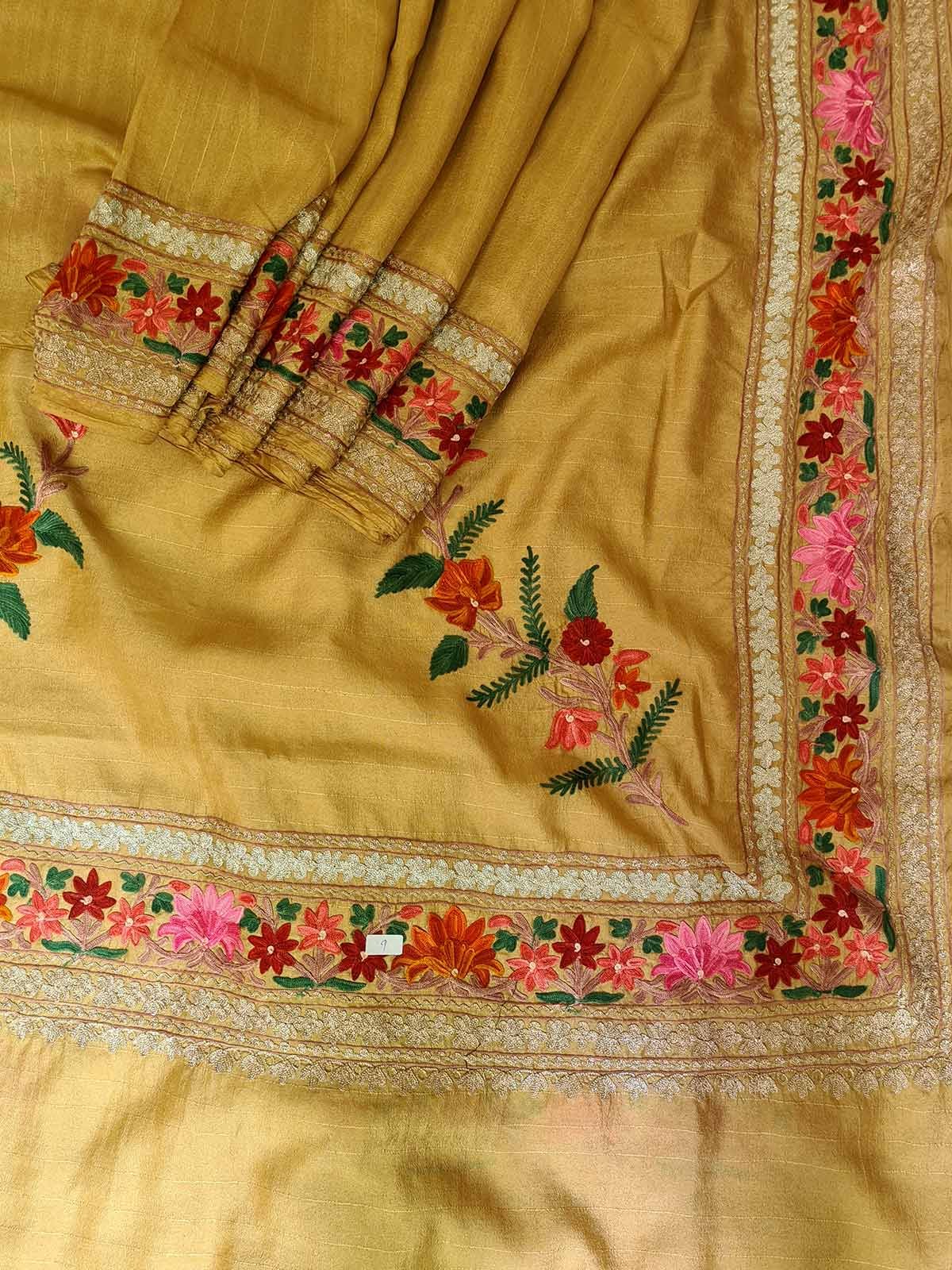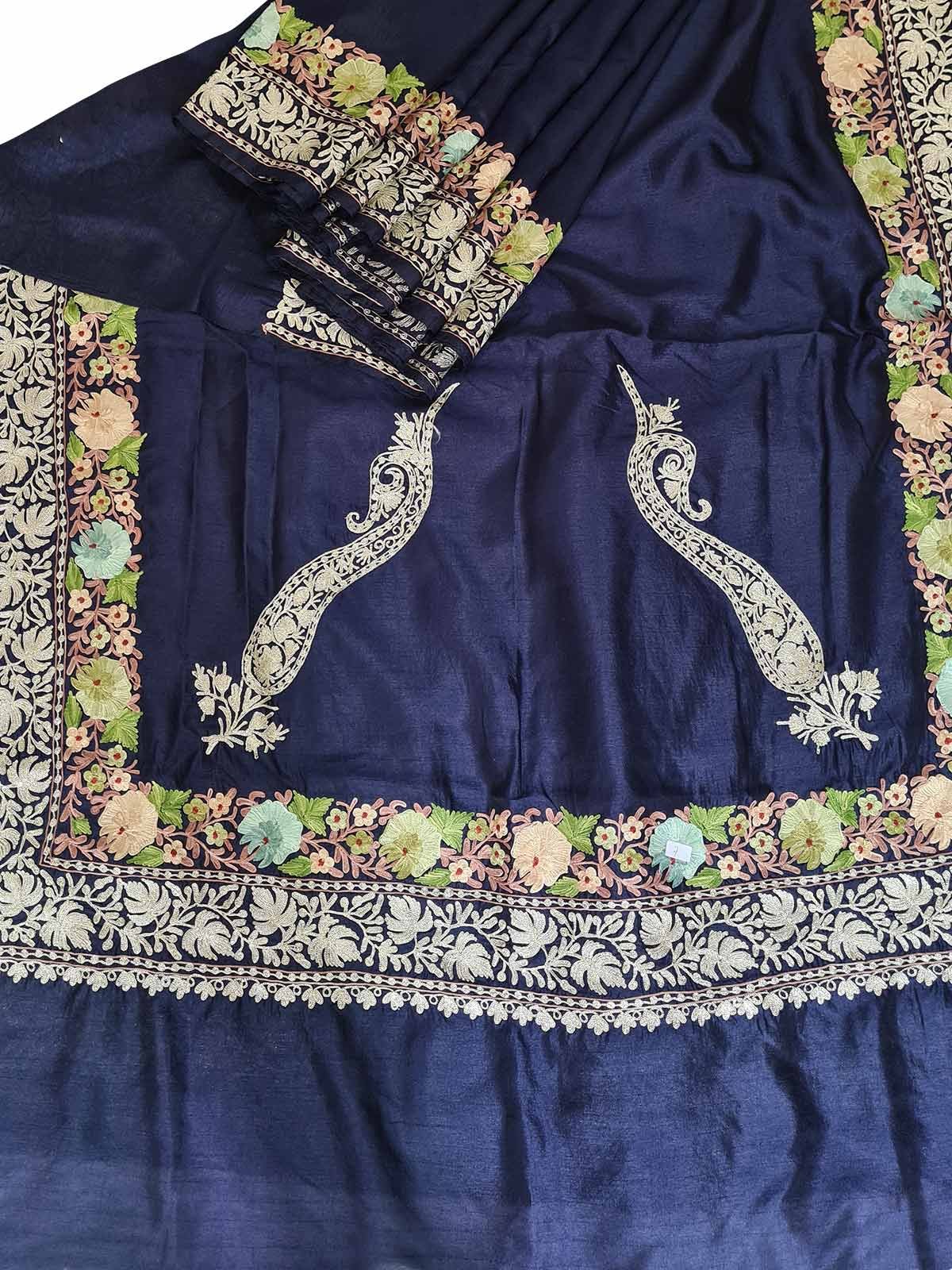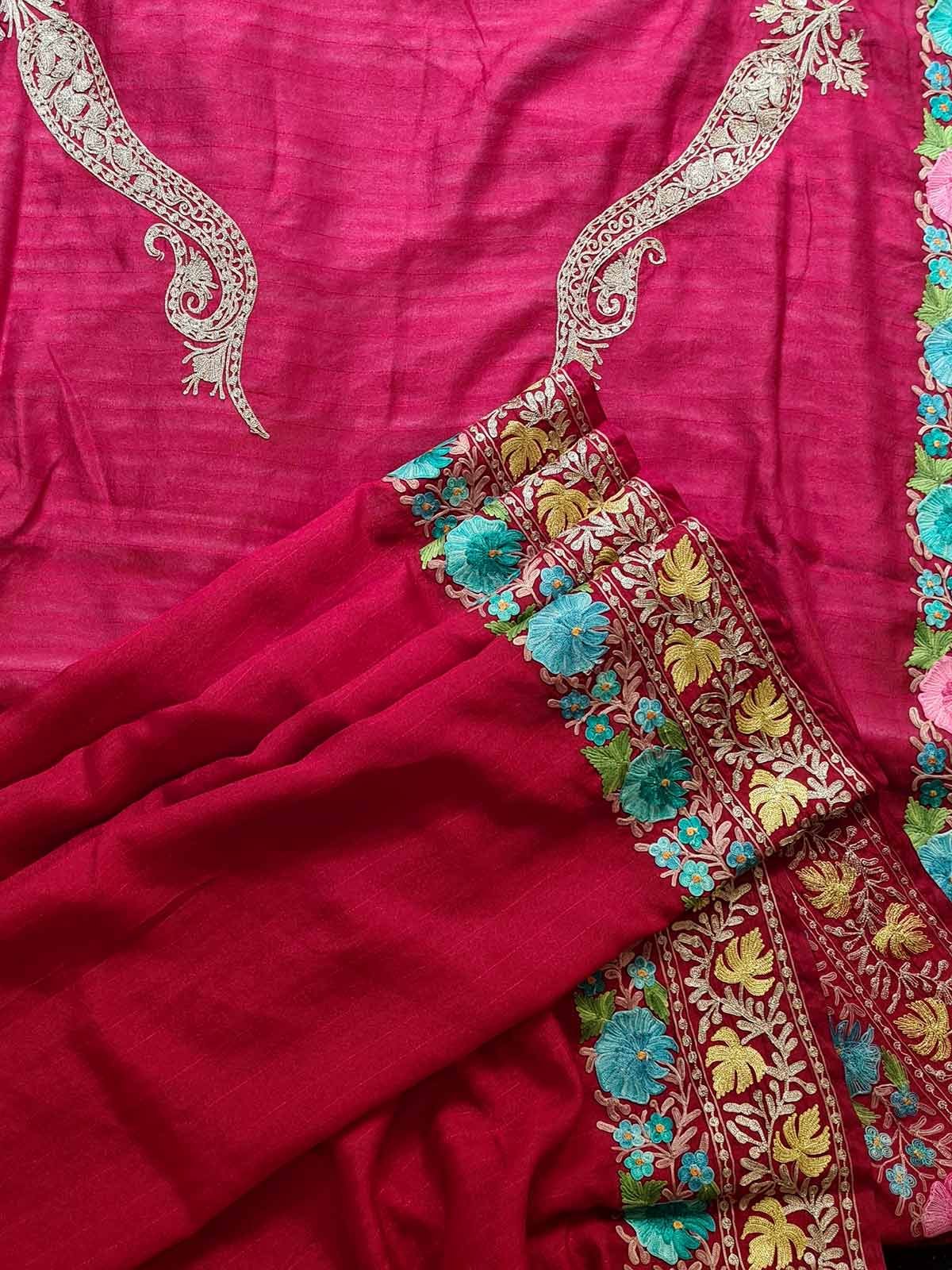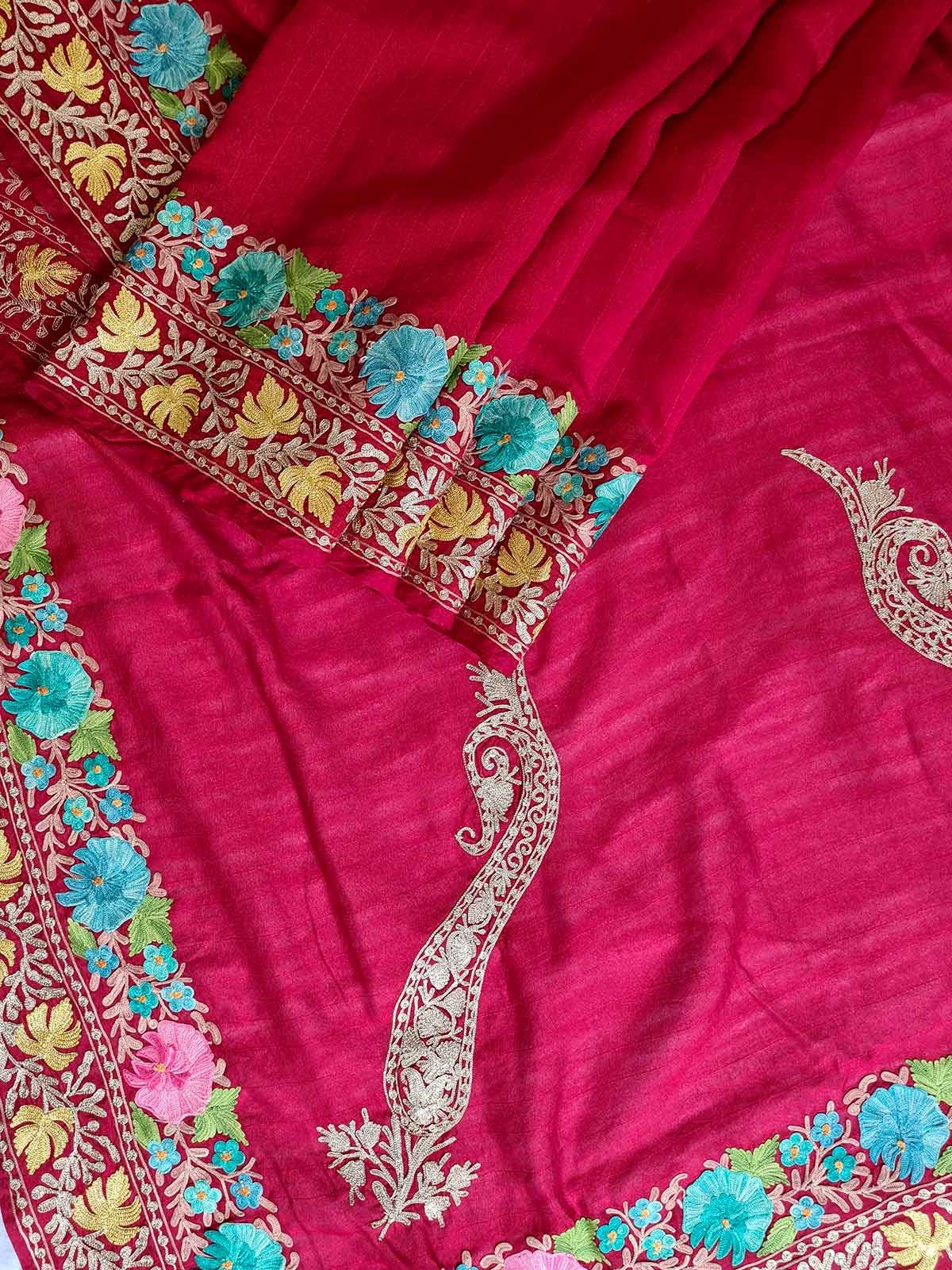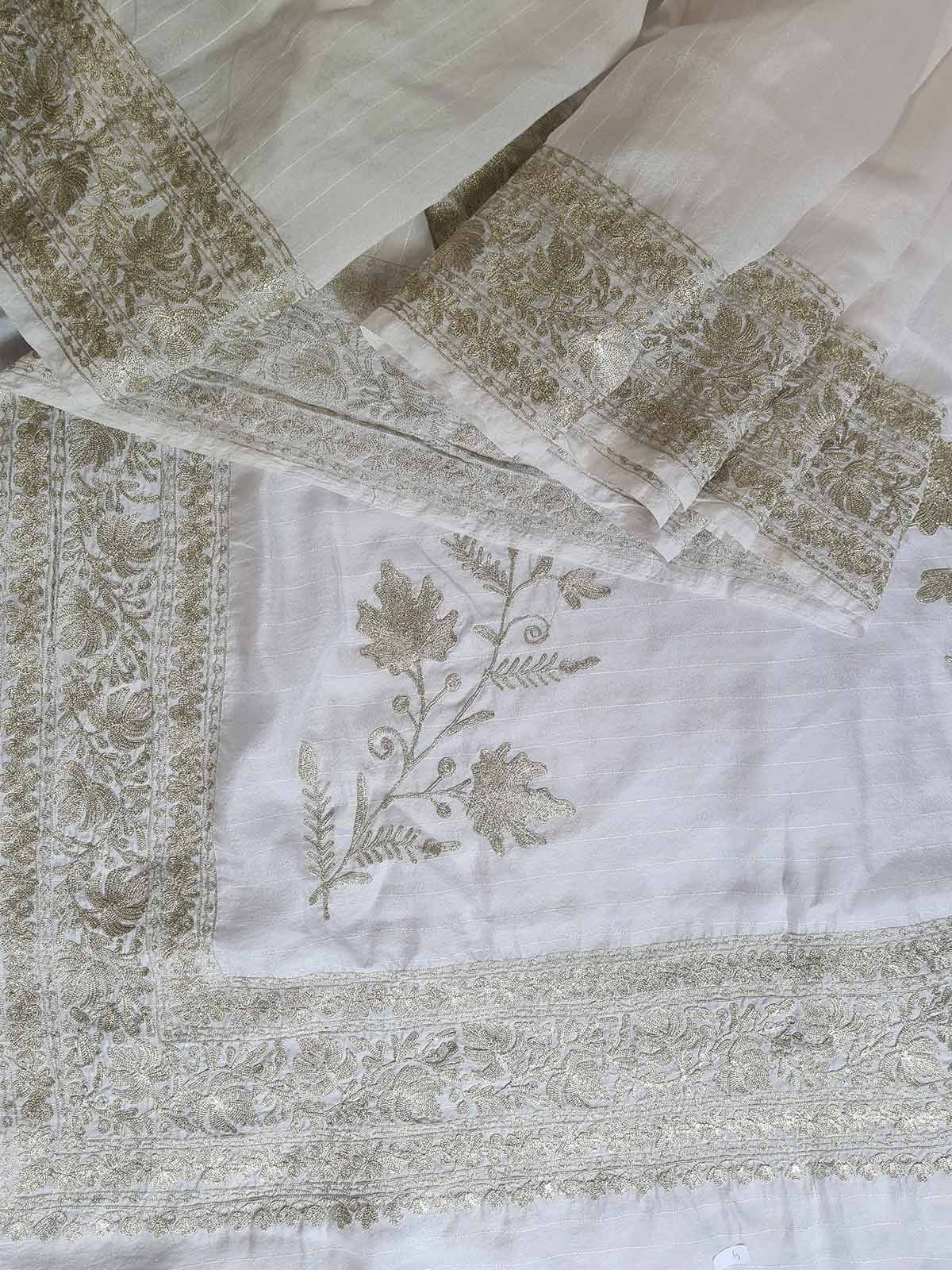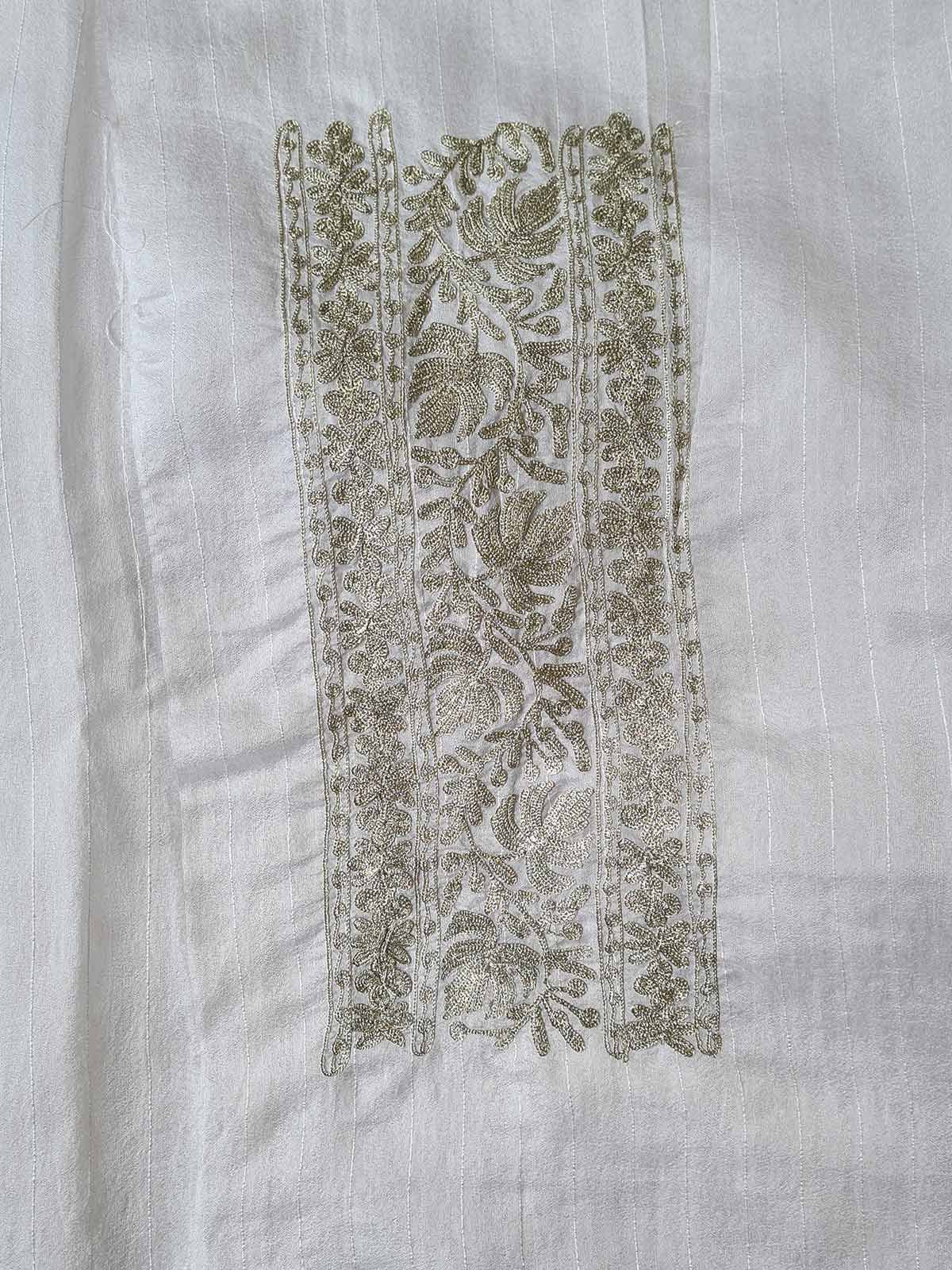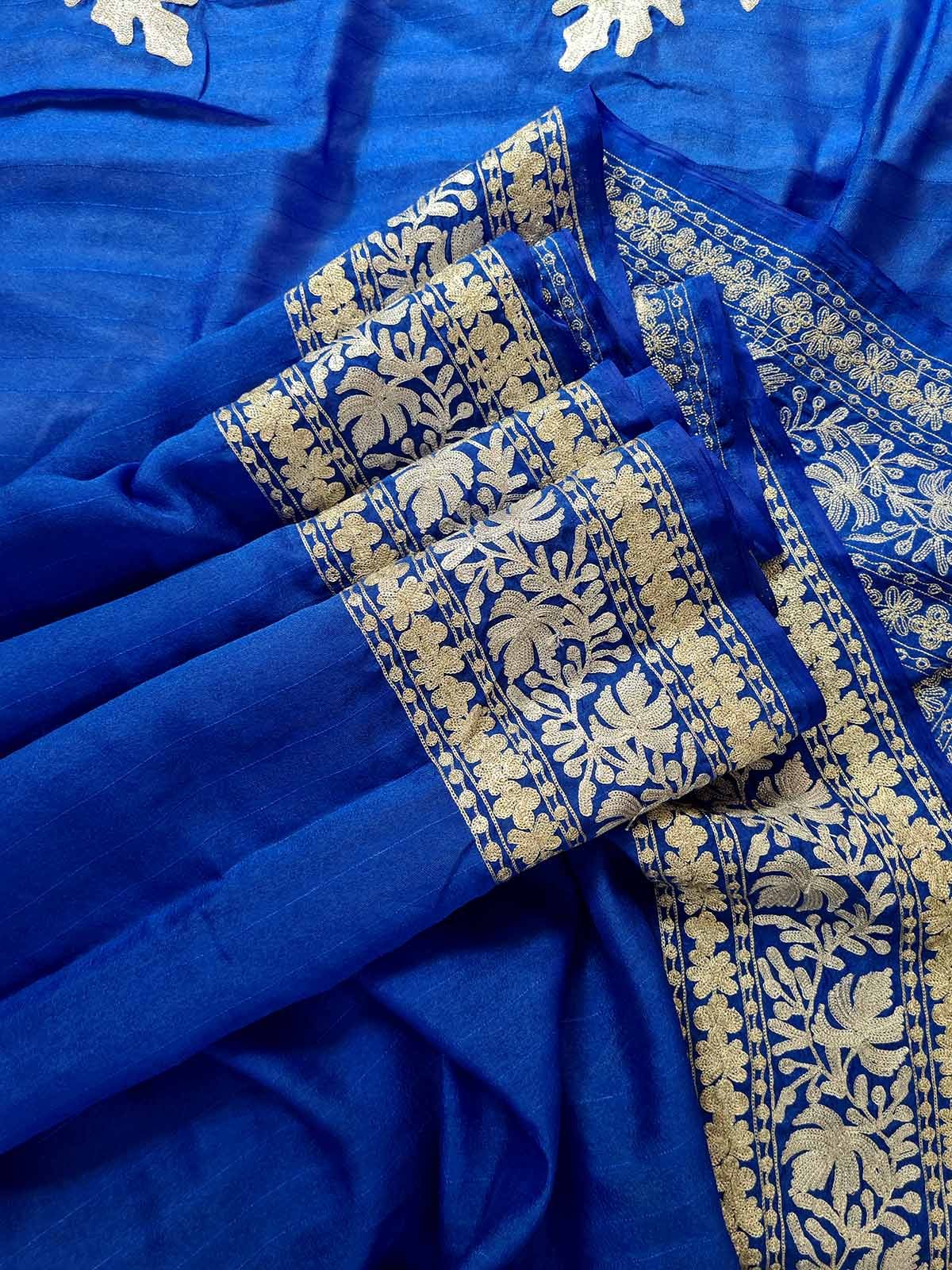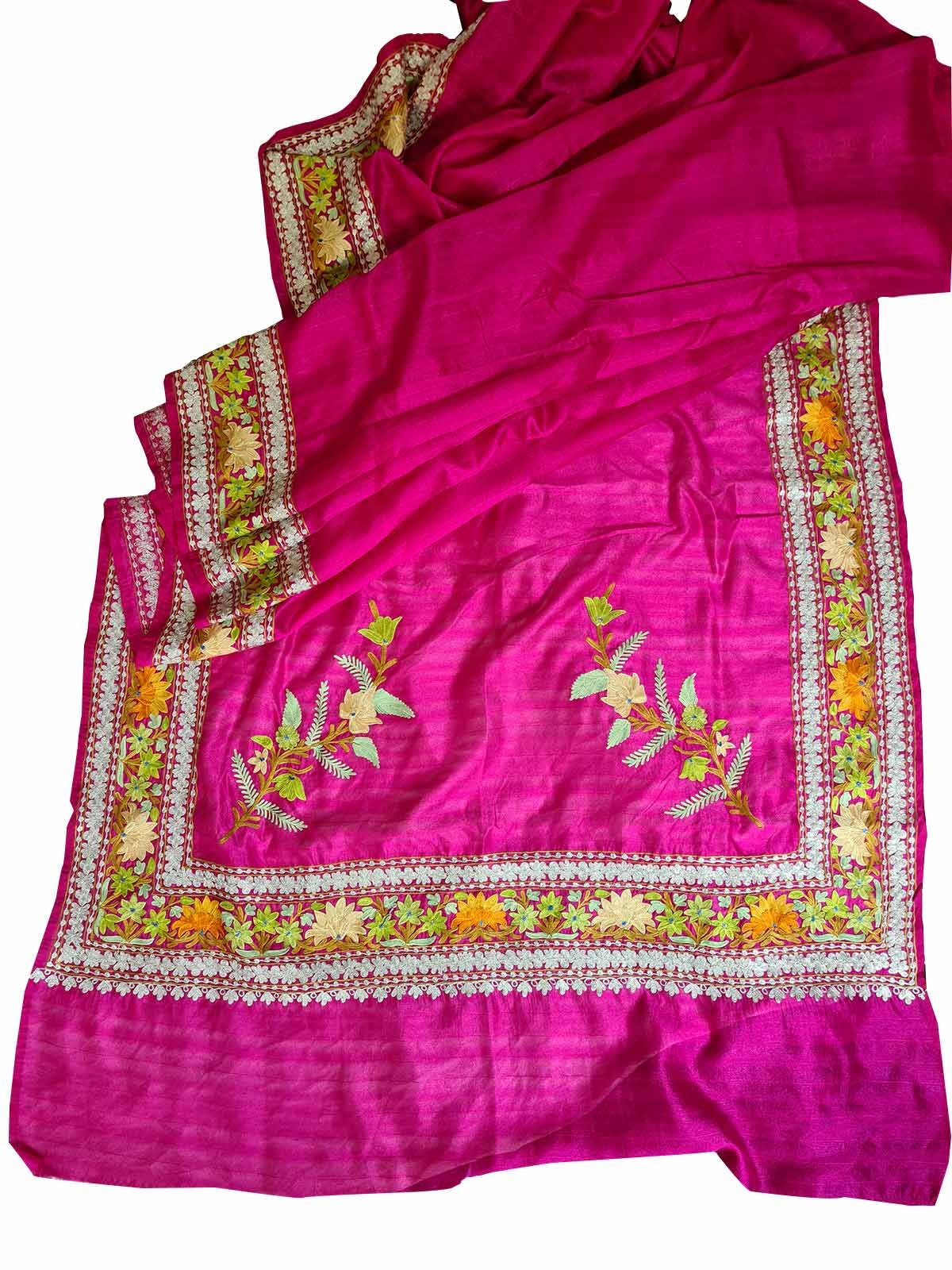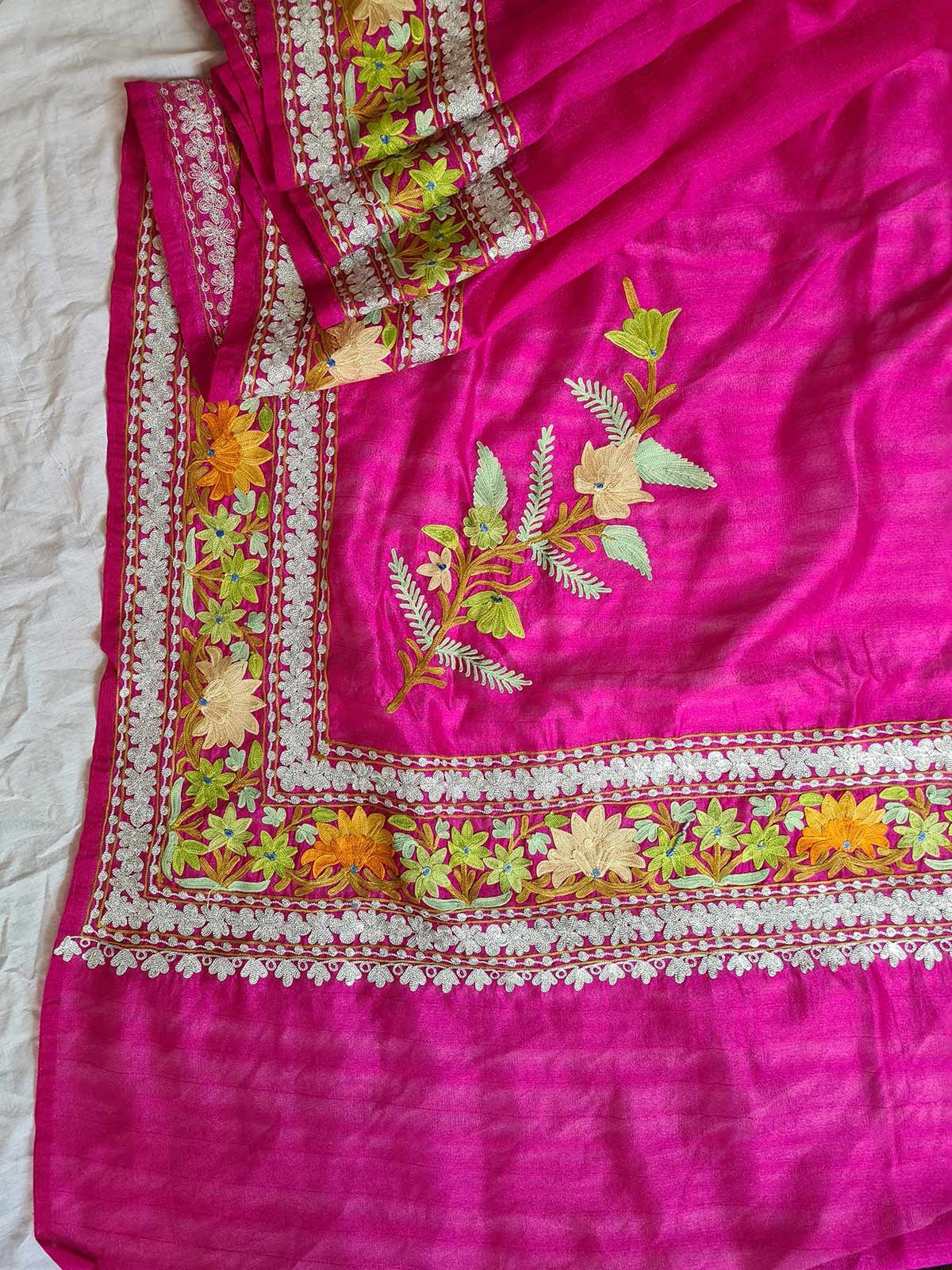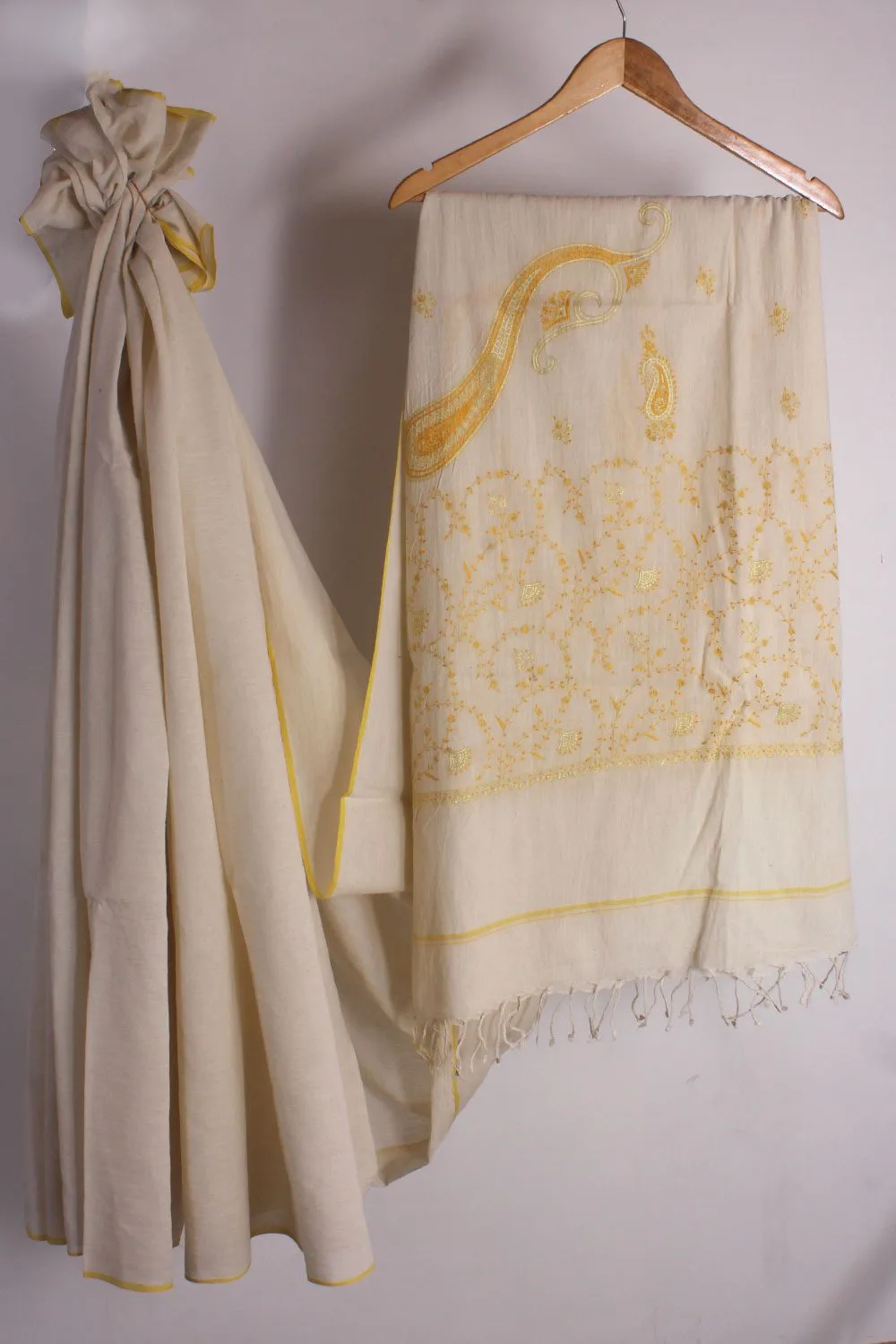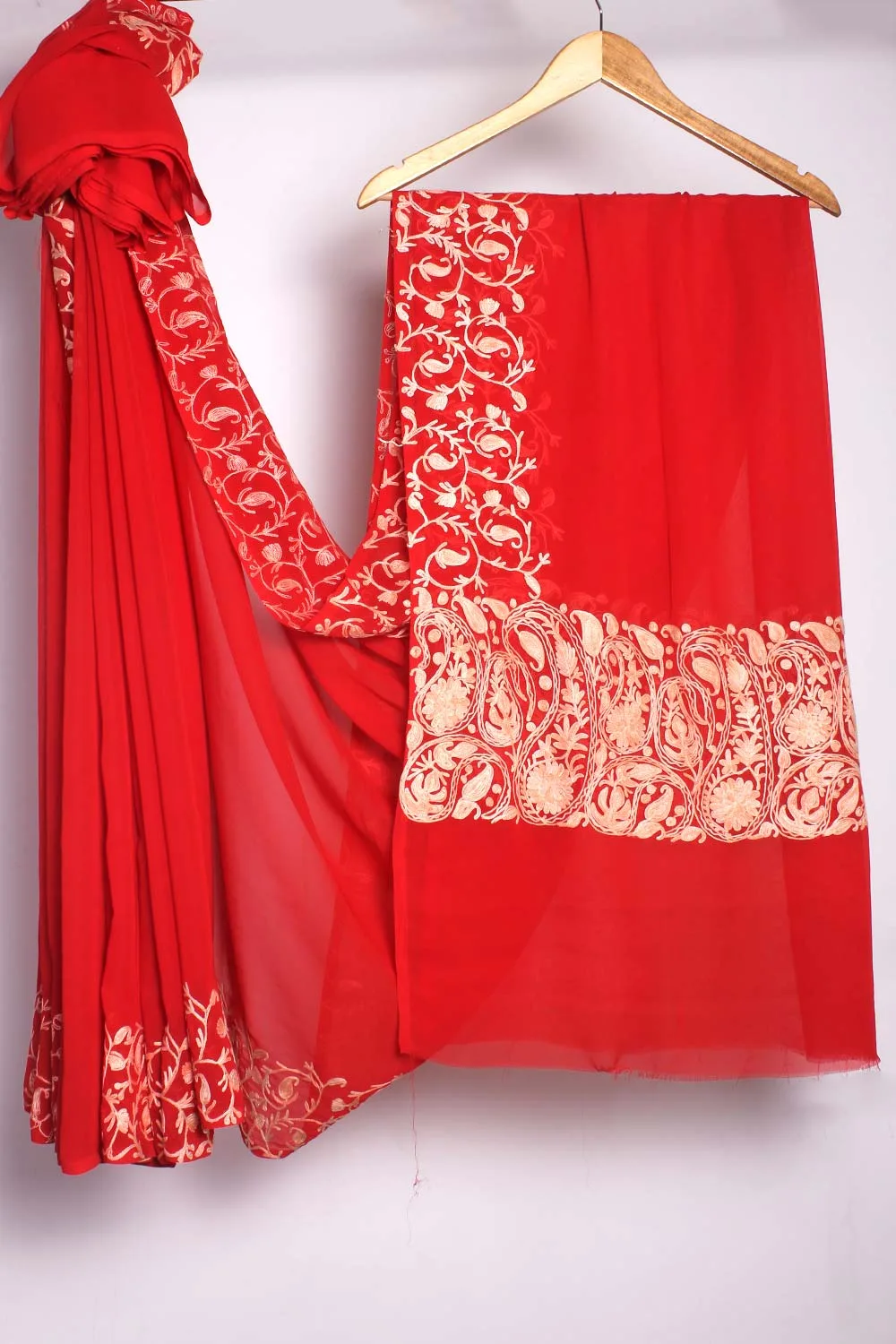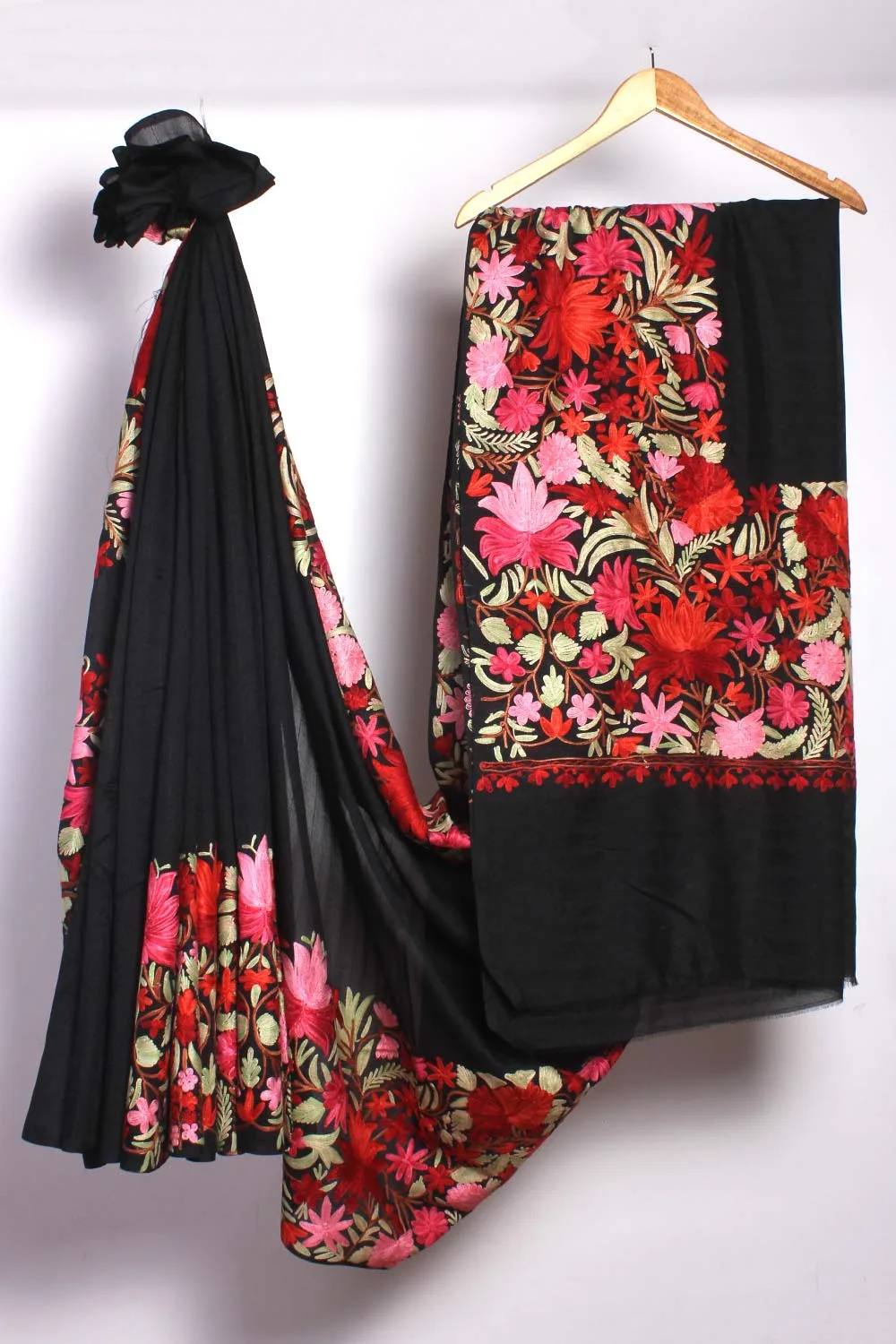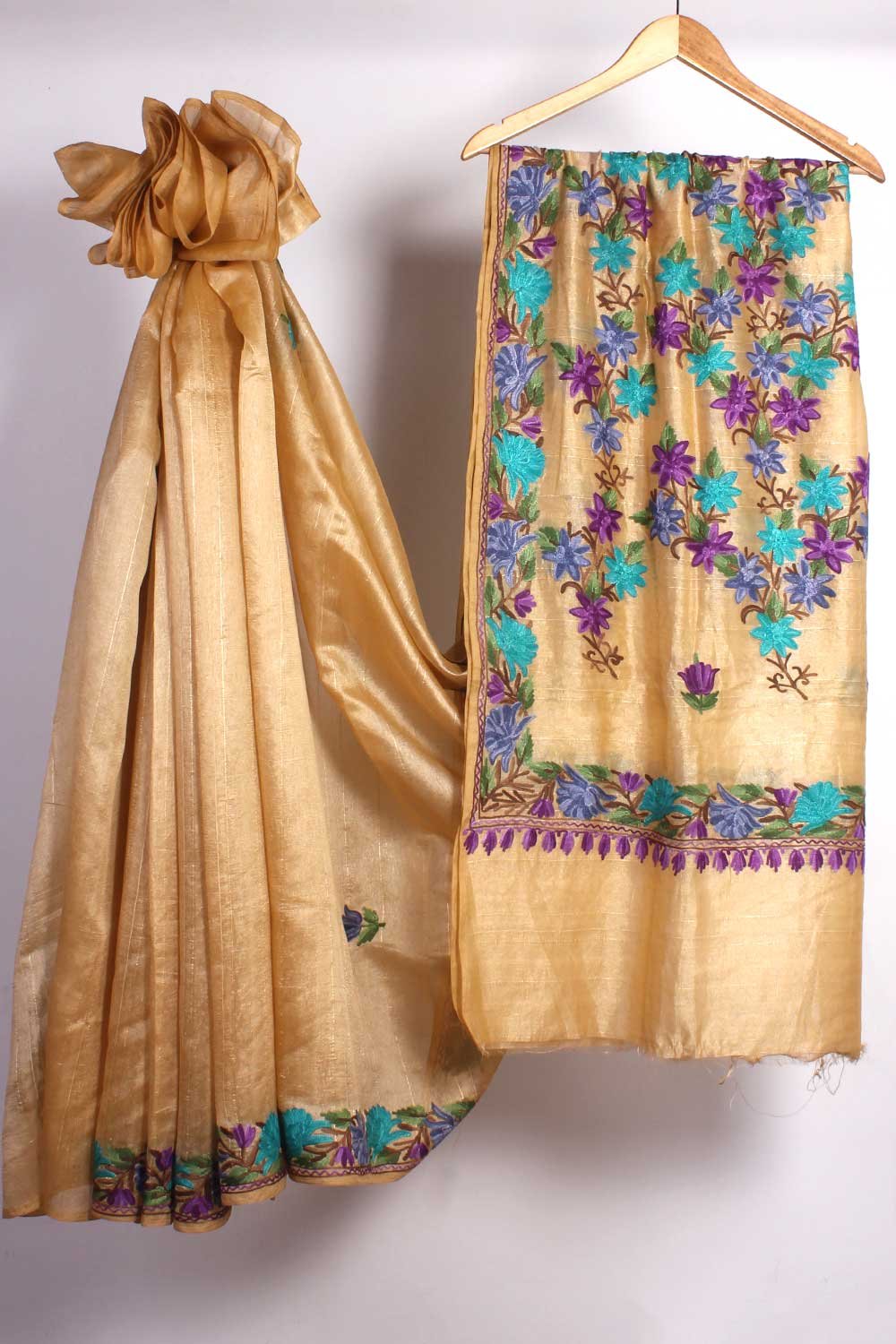Showing all 78 results
Kashmiri embroidered sarees are exquisite pieces of clothing known for their intricate craftsmanship and rich cultural heritage. The embroidery techniques used in Kashmiri sarees are centuries-old and reflect the region’s artistic prowess.
Here are some key features of Kashmiri embroidered sarees:
1. **Types of Embroidery**: Kashmiri sarees often feature several types of embroidery, including Aari work, Sozni embroidery, and Tilla work. Aari work involves chain stitch embroidery using a hooked needle, Sozni embroidery is intricate needlework often done with silk threads, and Tilla work incorporates metallic threads for a touch of opulence.
2. **Designs and Patterns**: The designs on Kashmiri sarees are typically inspired by nature, with motifs like paisleys, flowers, birds, and chinar leaves being common. These motifs are intricately embroidered onto the saree, creating a stunning visual appeal.
3. **Fabric**: Kashmiri sarees are often made from luxurious fabrics such as Pashmina, silk, and georgette. Pashmina sarees, in particular, are highly prized for their softness, warmth, and fine texture.
4. **Color Palette**: Traditional Kashmiri sarees often feature a rich color palette including vibrant shades of red, blue, green, and gold. These colors are used to create striking contrasts and enhance the beauty of the embroidery.
5. **Occasions**: Kashmiri embroidered sarees are popular choices for special occasions such as weddings, festivals, and cultural events. They are considered elegant and timeless, making them prized possessions in many wardrobes.
6. **Maintenance**: Due to their delicate embroidery and luxurious fabrics, Kashmiri sarees require special care. They should be dry-cleaned or hand-washed gently to preserve their beauty.
Overall, a Kashmiri embroidered saree is not just a piece of clothing but also a work of art that embodies centuries of craftsmanship and cultural heritage.





